Basements once resigned to dusty concrete now host home theaters, gyms, guest suites, and art studios—and the right basement floor is the foundation for all of it. Moisture is the core challenge below grade, so modern solutions focus on waterproof cores, breathable assemblies, and easy-swap tiles. From polished concrete that refines the slab to composite planks that click together like Lego, today’s options span every budget, skill level, and décor style. The twenty ideas that follow break down each material’s standout benefit—durability, warmth, acoustic comfort, eco-cred, or design flair—so you can match a floor to the way you actually live in the space.
1. Polished Concrete Basement Floor: Sleek Durability
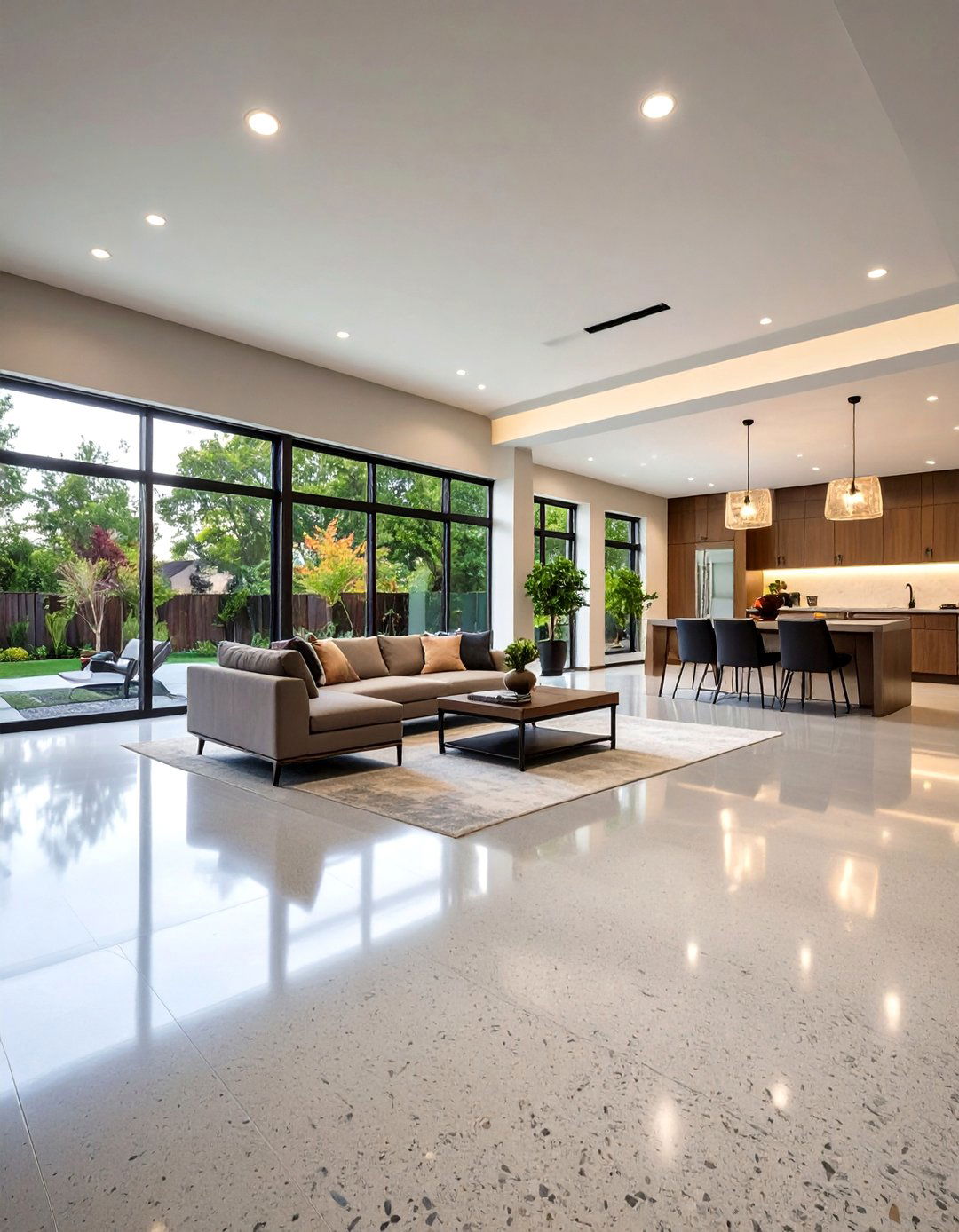
A polished concrete basement floor offers a trifecta of strength, shine, and savings. Starting with the slab that’s already there, contractors grind the surface smooth, then polish until it reflects light and makes the whole level feel bigger. The treatment densifies the concrete, so it resists dusting, scratches, and moisture without needing extra layers. Homeowners love that polished concrete costs less than many coverings and never traps allergens, making it ideal for craft rooms or home gyms. If you prefer color, stains or dyes can be added before the final polish, letting you customize pattern and tone without sacrificing durability.
2. Luxury Vinyl Plank Basement Floor: Waterproof Warmth
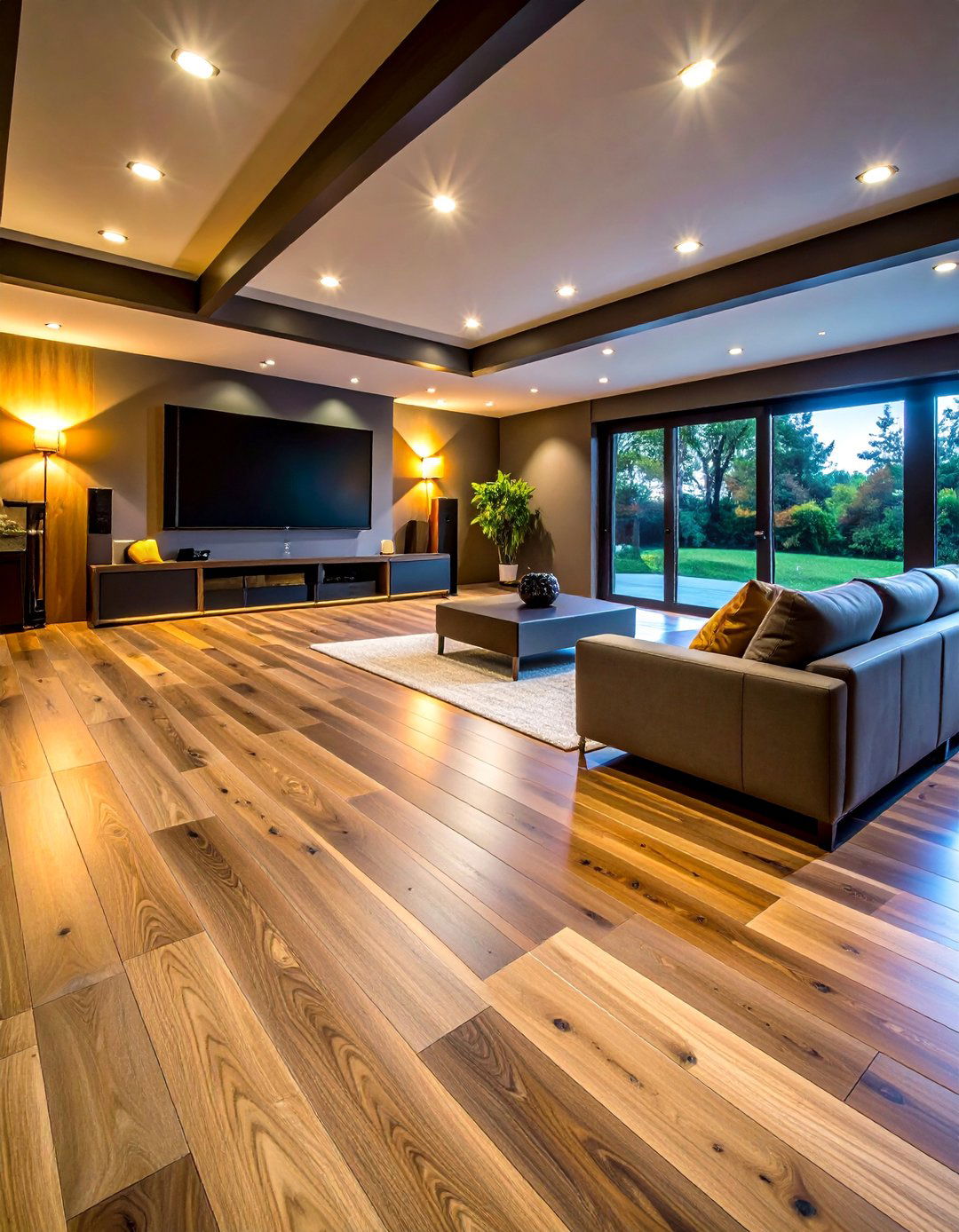
The luxury vinyl plank basement floor mimics hardwood but shrugs off the leaks that doom organic boards. Built on a rigid PVC or SPC core, each plank locks together to form a floating surface that is 100 percent waterproof, so the occasional sump-pump hiccup is no drama. The textured wear layer resists scratches from pets and rolling toys, while attached underlayment deadens footfall and adds a hint of insulation. Weekend DIYers appreciate the simple score-and-snap installation and the fact that damaged planks can be swapped without tools. Pick lighter tones to bounce scarce daylight or deep hues for theater-room mood today.
3. Engineered Hardwood Basement Floor: Classic Appeal
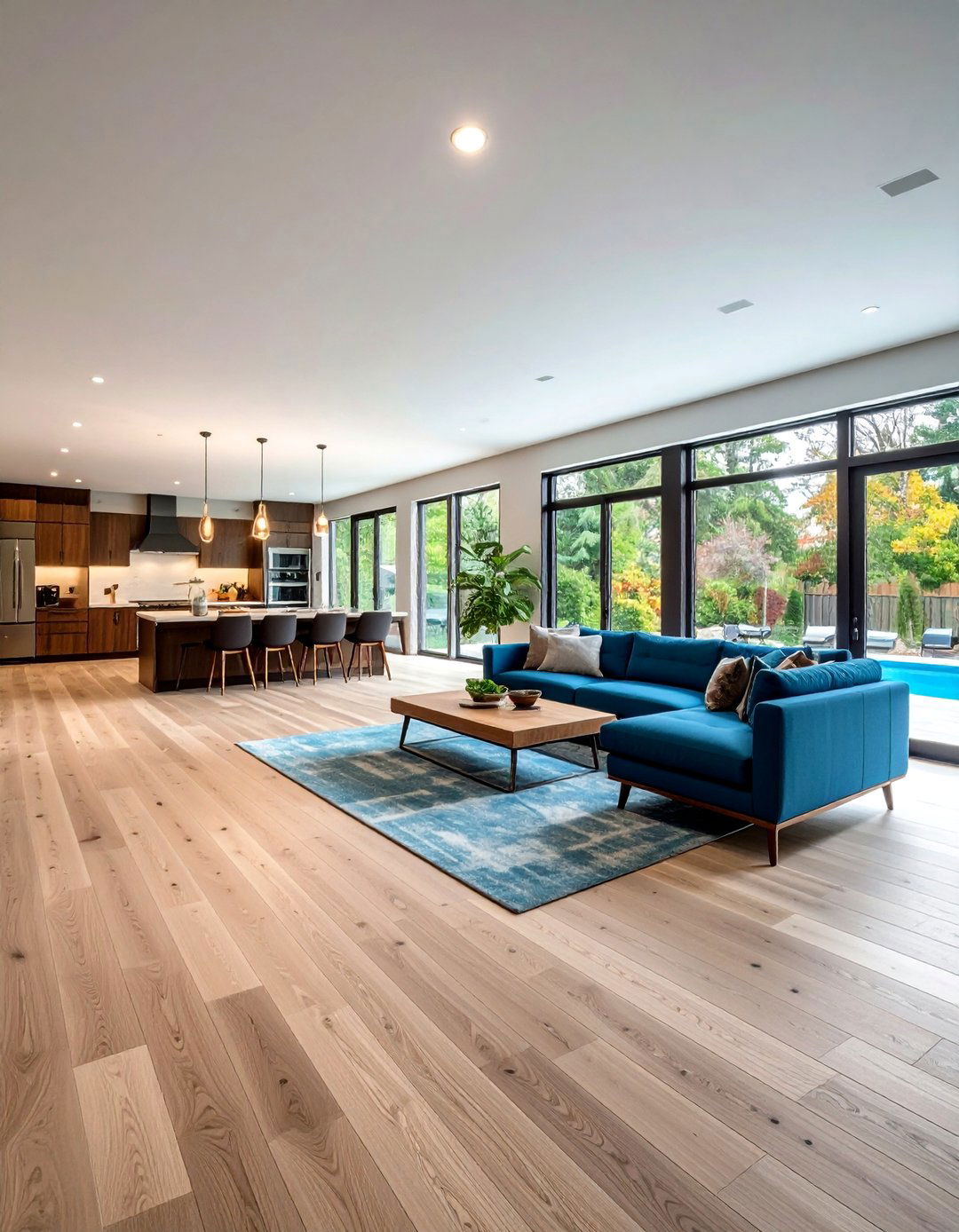
Unlike solid boards, an engineered hardwood basement floor carries the warmth of real timber while tolerating below-grade humidity swings. The planks sandwich a stable plywood or HDF core beneath a thick veneer, so seasonal expansion is minimal and gaps stay tight. When installed as a floating system over a vapor-retarding underlayment, you still get click-together convenience but with the option to refinish the top layer once or twice. Choose a low-sheen UV-cured finish to hide scuffs, and always seal the perimeter with flexible caulk to block edge seepage. If you crave a mid-century vibe, rift-sawn white oak looks especially fresh downstairs.
4. Rubber Tiles Basement Floor: Family-Friendly Cushion
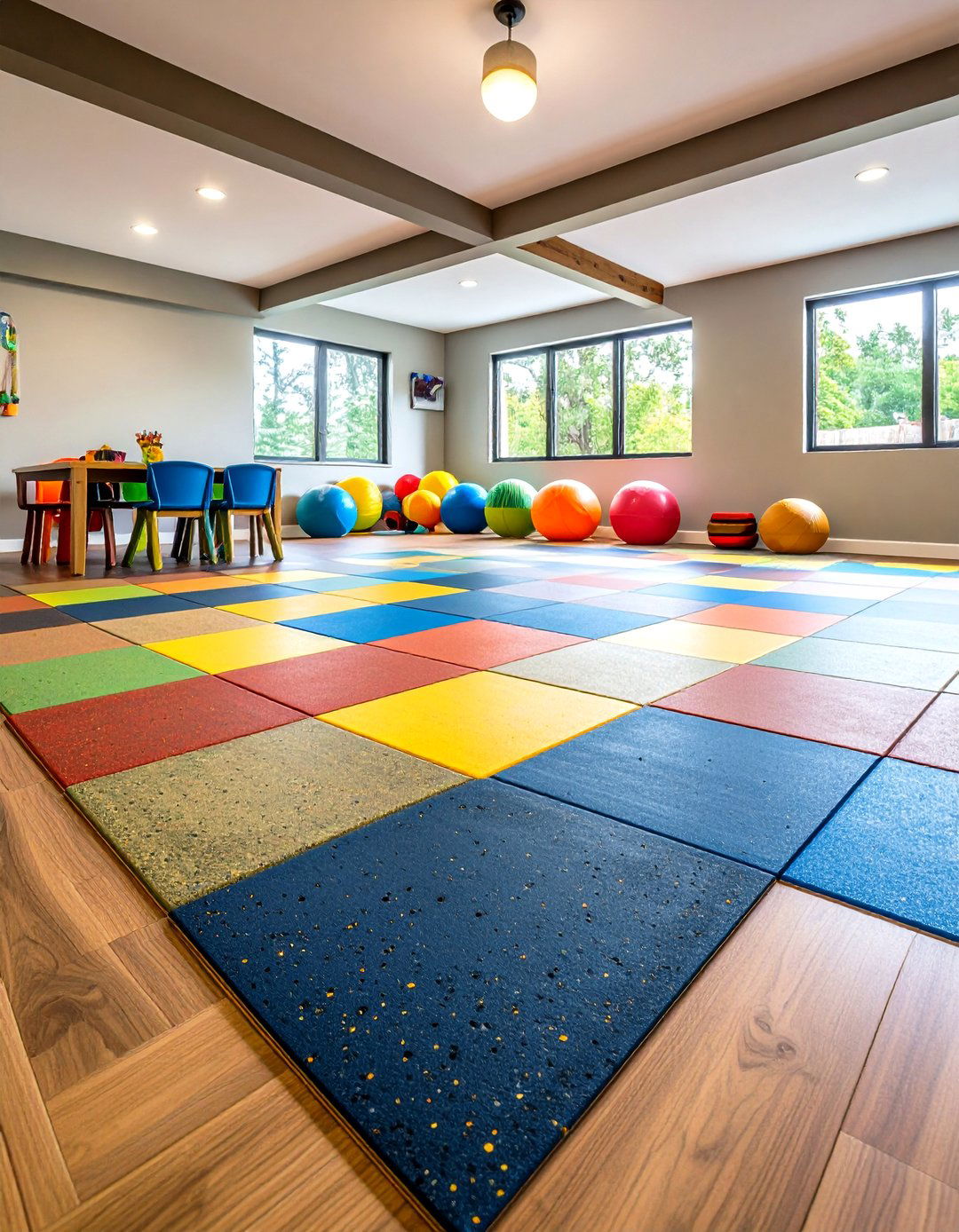
For parents who need a forgiving play zone, a rubber tiles basement floor cushions tumbles, muffles noise, and snaps together in an afternoon. Interlocking squares made from recycled gym-grade rubber create a continuous, water-resistant mat that resists mold and can be rolled up for cleaning after a plumbing mishap. Thicknesses range from 6 mm yoga-soft to 12 mm weight-room tough, so match the density to your activities. Dark speckled colors disguise spatters of craft paint, while beveled transition edges prevent stroller wheels from catching. If odors bother you, rinse tiles outside and let them air for a day before installation indoors always.
5. Painted Stenciled Basement Floor: Budget Creativity

Looking for a budget makeover that still feels bespoke? A painted stenciled basement floor lets you layer personality over plain concrete for the price of porch paint and a weekend of patience. After cleaning and etching, roll on a durable porch enamel, then press an oversized tile stencil to add Moroccan flourishes, mid-century angles, or anything in between. Water-based polycrylic topcoats keep the pattern from wearing under foot traffic, and touch-ups are as simple as a foam brush. Tape off a broad border in a coordinating shade to frame the room and disguise uneven walls along the concrete slab joints.
6. Cork Basement Floor: Eco-Friendly Comfort
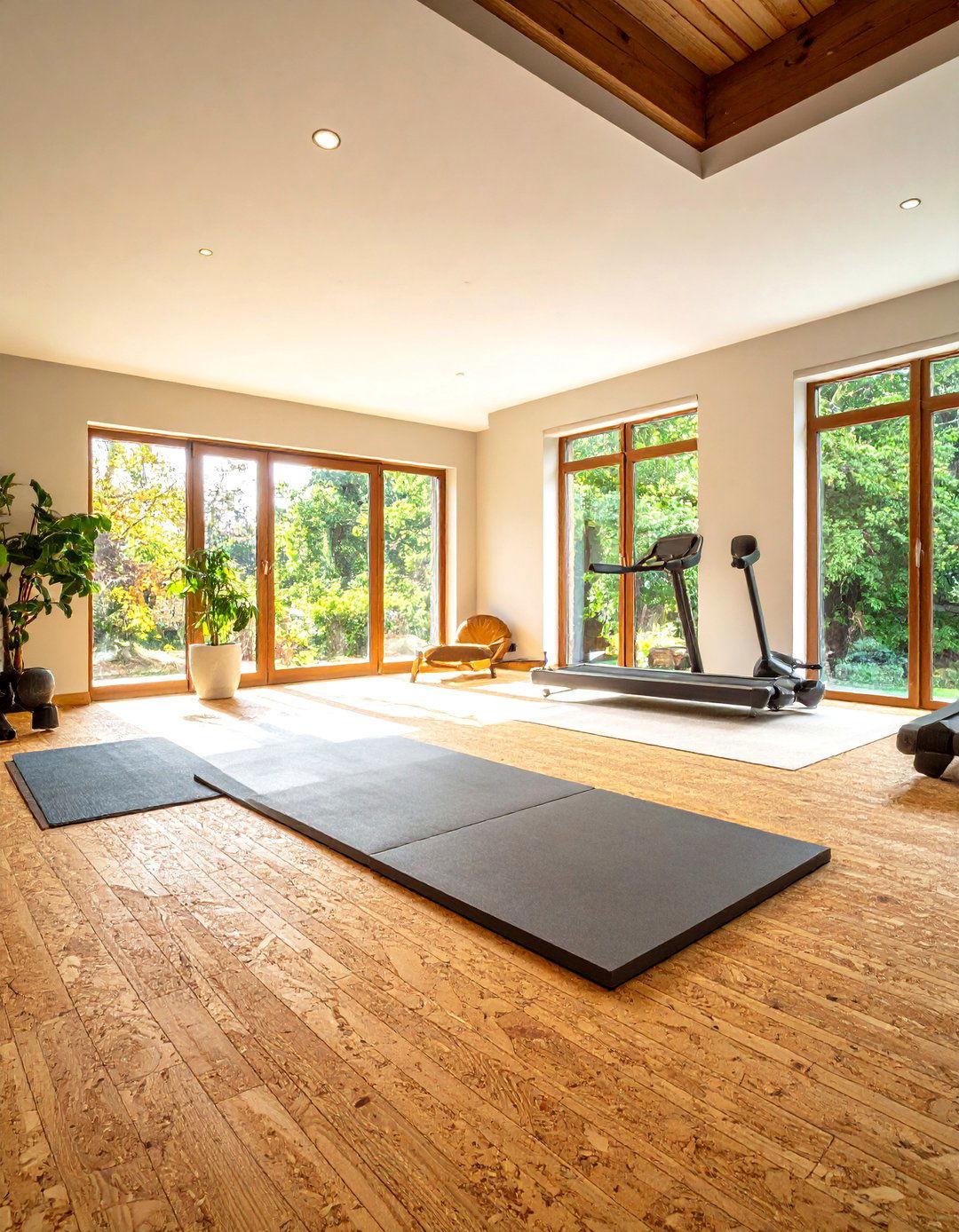
Consider a cork basement floor if you crave warmth underfoot and quieter acoustics. The cellular structure of cork traps millions of air pockets, delivering a soft, springy feel that makes treadmill sessions and marathon Lego builds less tiring. Because cork is naturally insect- and mold-resistant, tiles handle moderate humidity when installed as a click-together floating system over a moisture barrier. Apply a durable water-based polyurethane every few years to seal the surface and stop swelling. Light honey tones brighten low ceilings, while plank formats disguise seams. Keep furniture on wide felt pads to prevent dents that can occur in soft cork.
7. Porcelain Tile Basement Floor: Flood-Resistant Style
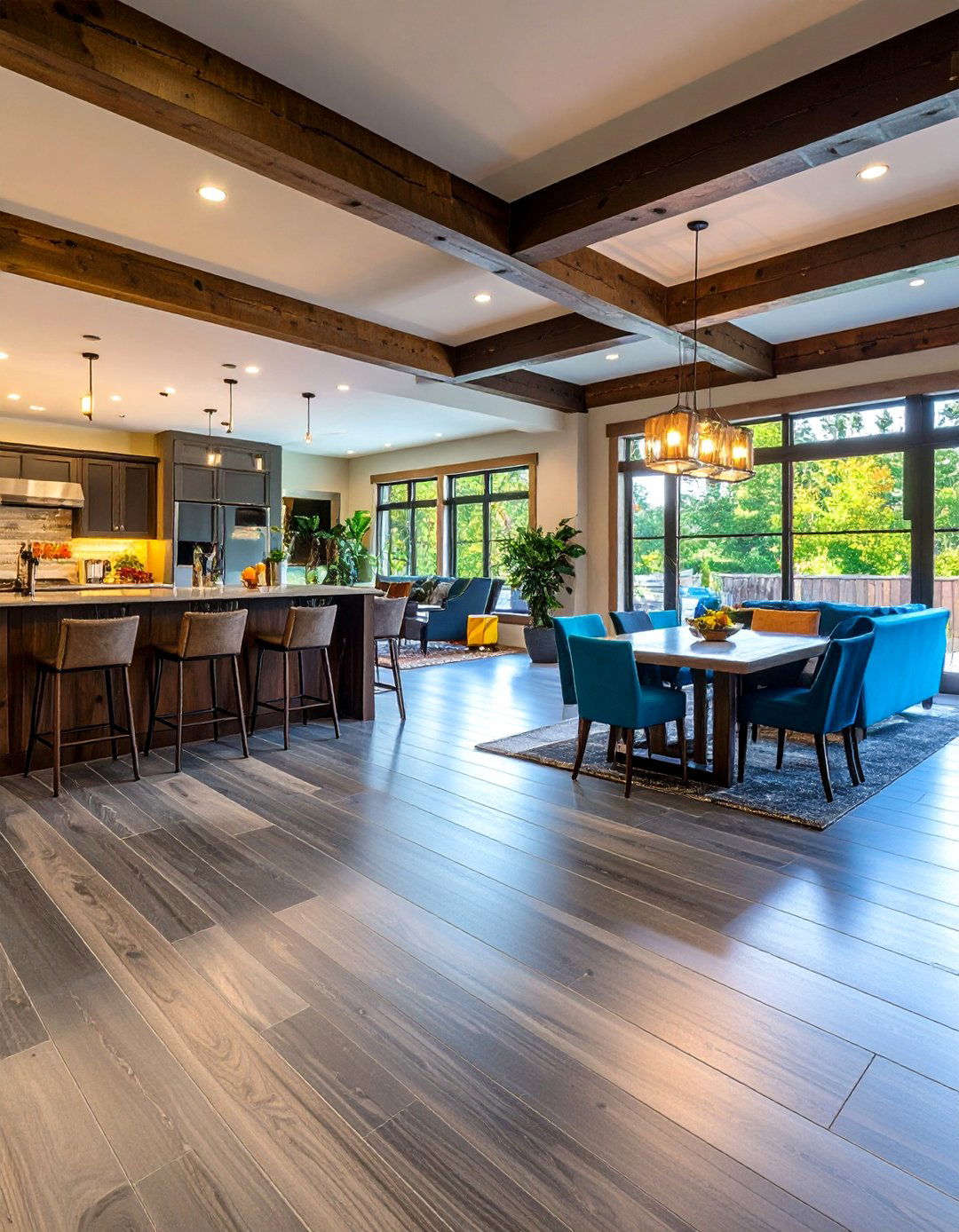
By choosing a porcelain-tile basement floor you gain near-bulletproof resistance to water, pets, and party spills without sacrificing style. Porcelain’s low absorption rate—often below 0.5 percent—means even minor seepage cannot reach the clay body, greatly reducing the risk of mildew smells. Large-format planks that mimic oak or slate reduce grout lines and install over uncoupling mats that isolate subfloor cracks. If your slab sweats in summer, select a slip-resistant finish rated at least DCOF 0.42. Pair with an electric heat mat for cozy movie nights, and remember to use epoxy grout in case future leaks require bleach cleanup for fast sanitizing.
8. Carpet Tiles Basement Floor: Cozy Modular Solution
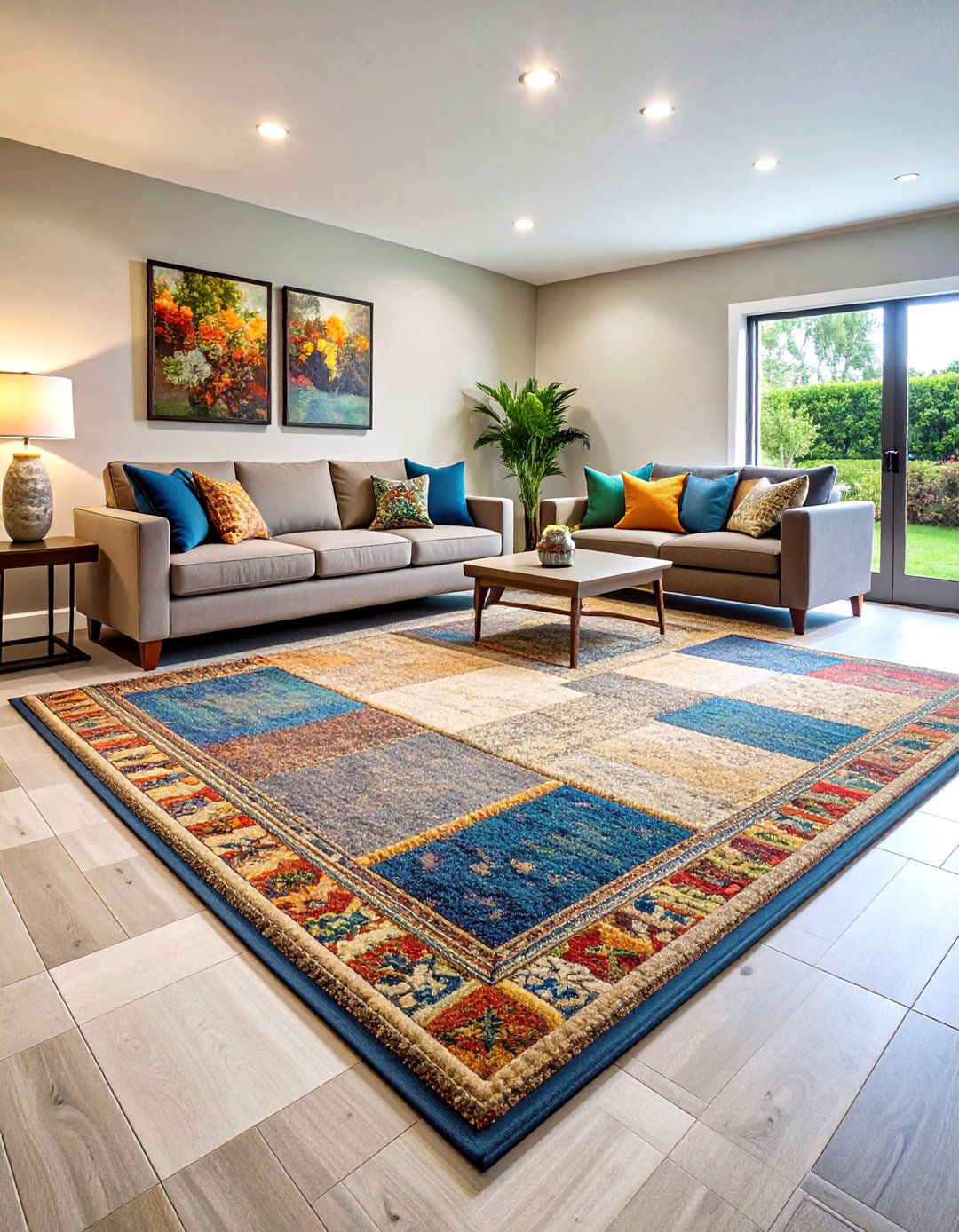
Another cozy yet practical choice is a carpet tiles basement floor that clicks together on a raised plastic grid. The vents under each 12-inch square let damp concrete breathe, so any vapor that creeps through can evaporate instead of feeding mold. Individual tiles lift out for vacuuming or replacement after spills—handy for gaming nights with soda. Mix two colors to create an inexpensive patterned rug, or snap stair-nose pieces onto steps for a unified look. Install a thin acoustic pad first if you want movie-theater hush. Should a flood strike, simply pop up the squares, dry the slab, and reinstall.
9. Epoxy-Coated Basement Floor: Industrial Gloss
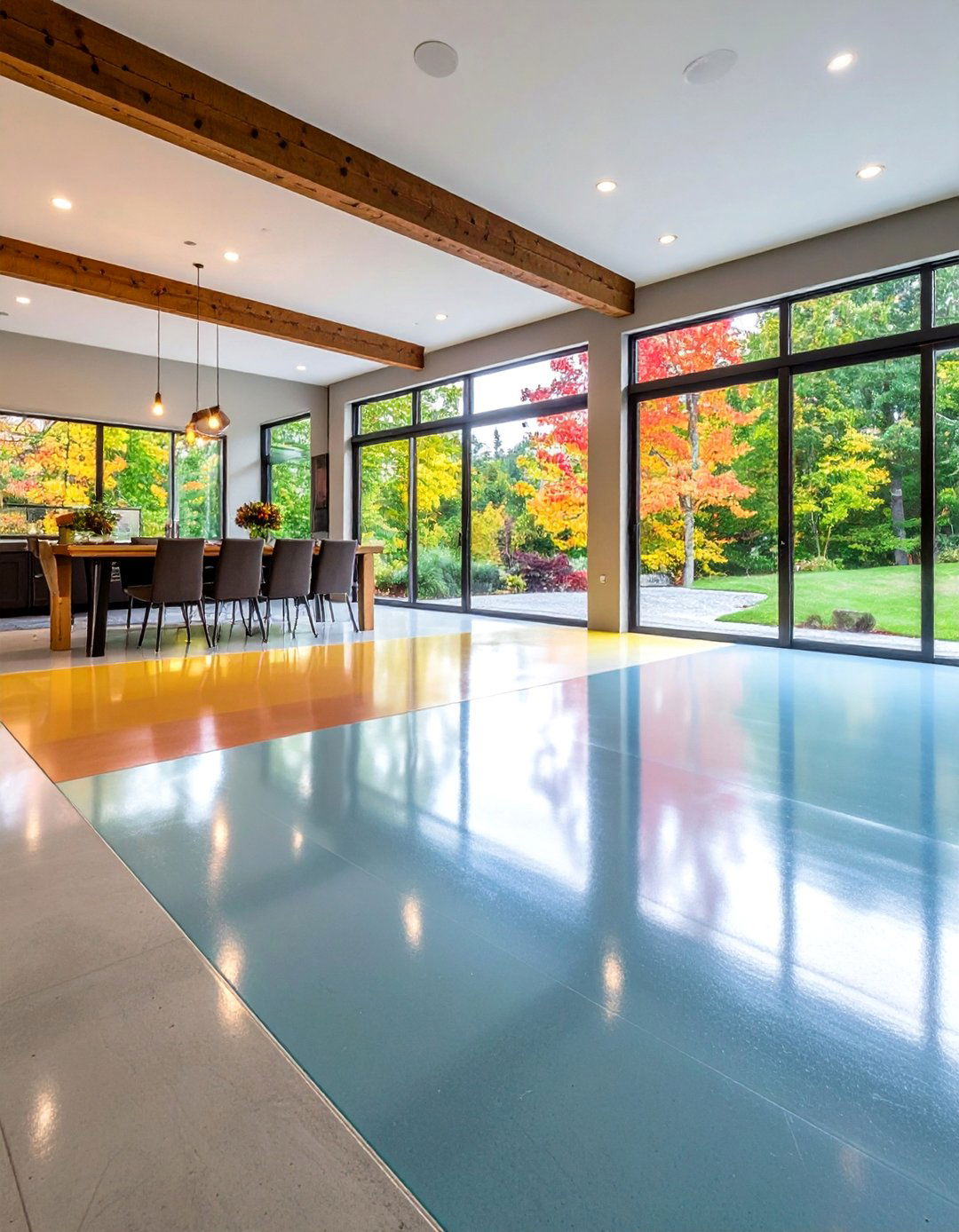
Surprisingly easy to keep pristine, an epoxy-coated basement floor gives off a showroom gloss while sealing concrete pores against moisture. Two-part, 100 percent-solids formulas cure into a thick, chemical-resistant shell that hot-tire marks, bleach, and kids’ scooter wheels can’t mar. Add metallic pigments or vinyl chips for depth and slip resistance; then finish with a UV-stable polyaspartic clear coat so sunlight from walk-out doors won’t yellow the surface. Because curing releases fumes, plan plenty of ventilation or choose lower-odor waterborne kits. If the slab shows hairline cracks, patch with an epoxy filler first so the final coat stays mirror-smooth for years.
10. Laminate Basement Floor: Quick, Affordable Upgrade
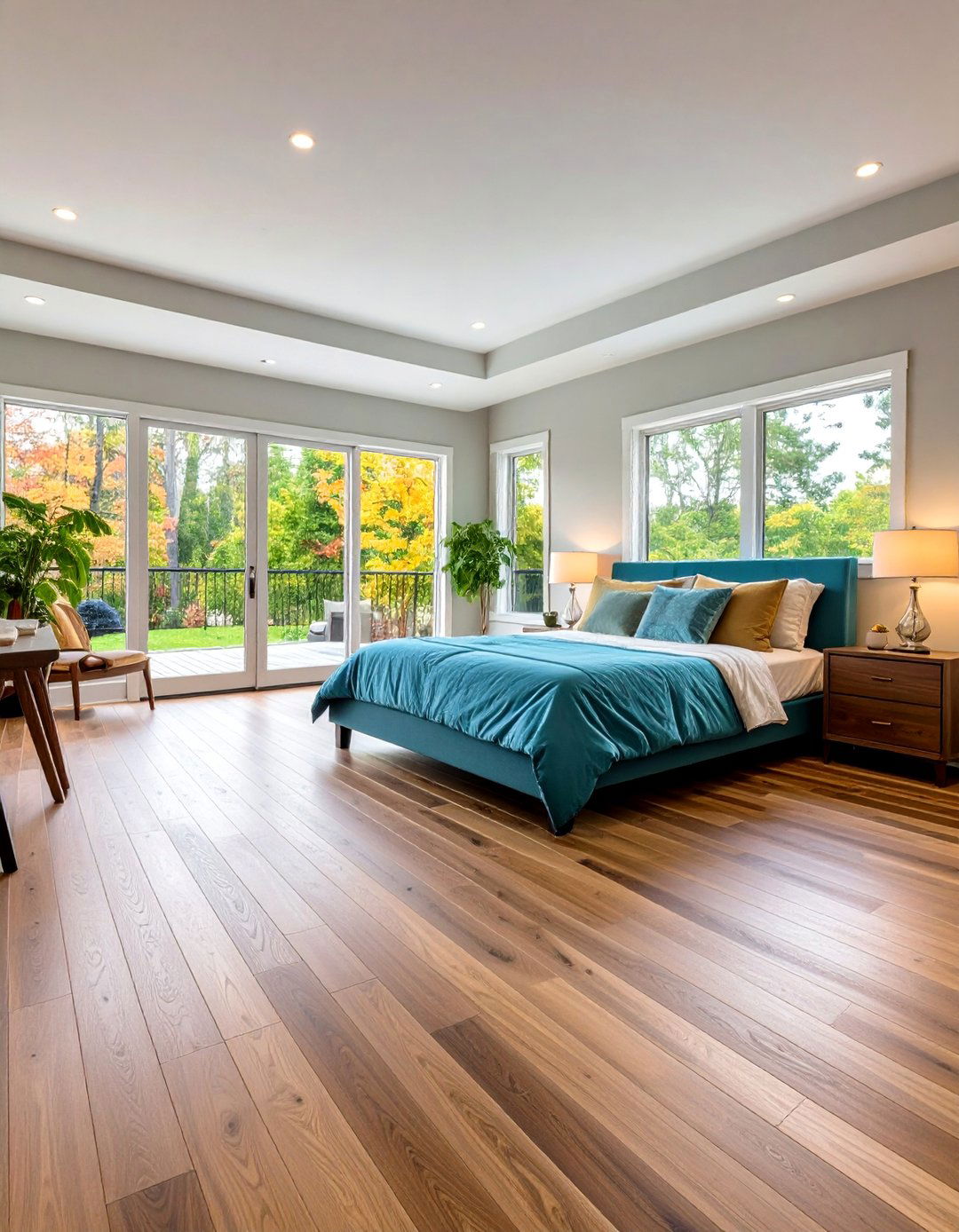
Although laminate once had a damp-prone reputation, today’s water-resistant laminate basement floor rivals vinyl for protection while giving a sharper wood grain image. The core is now infused with resins that slow swelling and carry warranties for below-grade use, provided you float the planks over a 6-mil vapor barrier and seal every expansion gap. Integrated padding softens footfall, and attached locking systems mean you can finish a spare bedroom in a single evening. Choose wide 8-inch boards to visually stretch rooms, and keep a few extra cartons; slipping a laminate tongue under existing boards makes spot repairs painless down the line.
11. Bamboo Basement Floor: Sustainable Strength
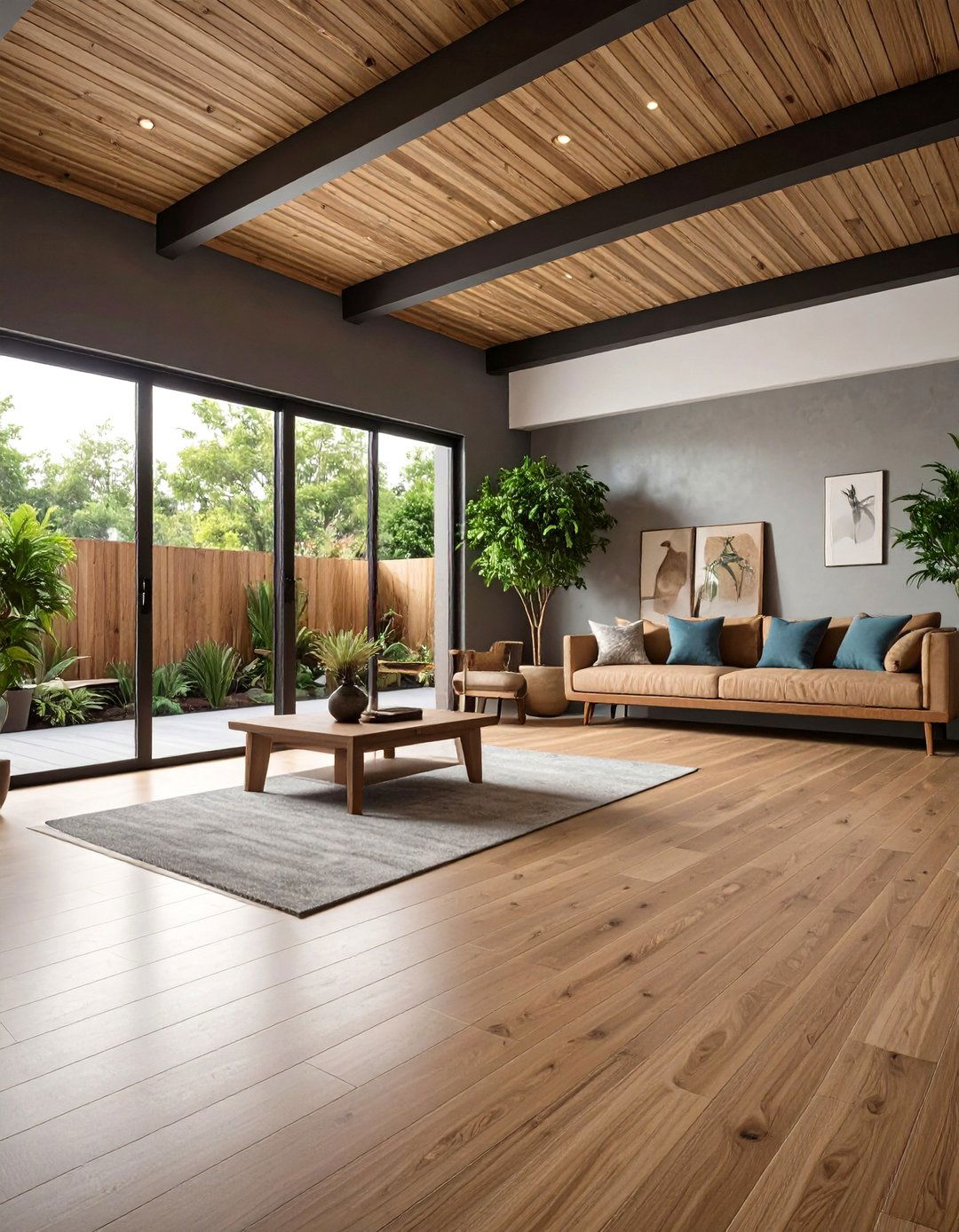
One green-minded upgrade is a bamboo basement floor engineered for moisture resistance. Strand-woven bamboo fibers are compressed with resin to create a dimensionally stable plank harder than many oaks, yet it handles swings in humidity better than solid maple. Click-lock designs install over acoustic underlayment, adding a soft thud instead of an echo when kids jump. Look for planks certified by reputable eco labels to ensure adhesives emit minimal VOCs. If you’re after drama, carbonized espresso tones contrast beautifully with white walls; just remember to run a dehumidifier during the wet season to keep all plant-based floors happy and resilient.
12. Heated Radiant Basement Floor: Year-Round Comfort
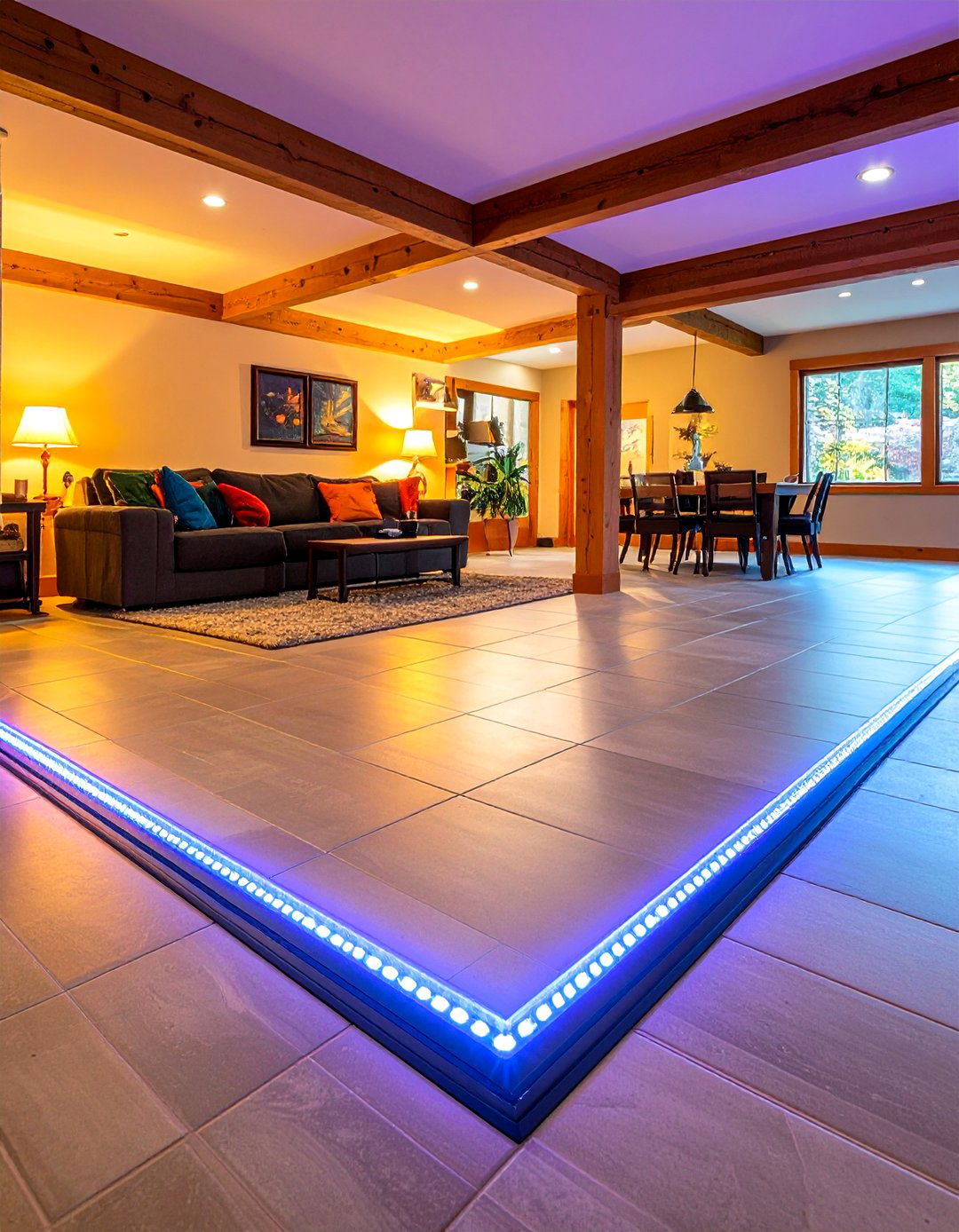
To chase winter shivers, a heated radiant basement floor circulates warm water or wires right beneath your chosen surface, turning the entire slab into a gentle radiator. Hydronic tubes embedded in new topping slabs offer the highest efficiency if you are already re-pouring concrete, while electric mats roll out over existing floors and connect to smart thermostats. The steady, even warmth helps prevent condensation too, because surfaces stay above dew point. Place sensors at door thresholds so the system anticipates cold drafts, and add a thermal break under the tubing so energy goes up into the room rather than down into the ground.
13. Peel-and-Stick Vinyl Basement Floor: DIY Ease
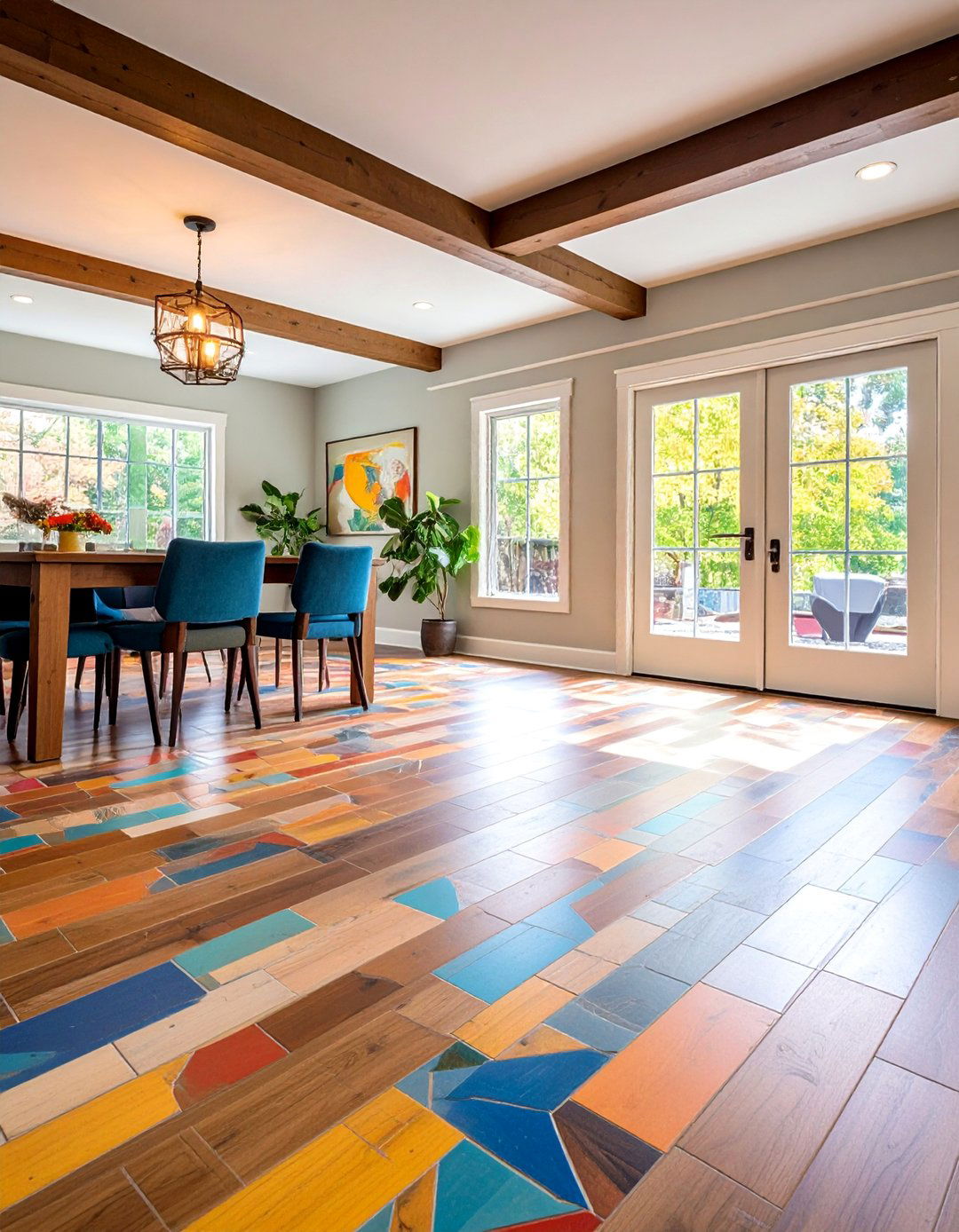
With a peel-and-stick vinyl basement floor, instant gratification finally meets flood caution. Self-adhesive tiles come pre-backed with pressure-sensitive glue; just snap a chalk line, peel, and press. Because each tile lies flat at only 2–3 mm thick, thorough subfloor prep is essential—scrape high spots and roll on primer so the adhesive bonds. If a corner curls after a plumbing leak, warm it with a hair dryer and re-press instead of tearing out the whole floor. Wood-look planks can refresh a laundry area in a single afternoon, while bold encaustic patterns transform a drab utility space into a cheerful mudroom with ease.
14. Terrazzo Basement Floor: Artistic Statement
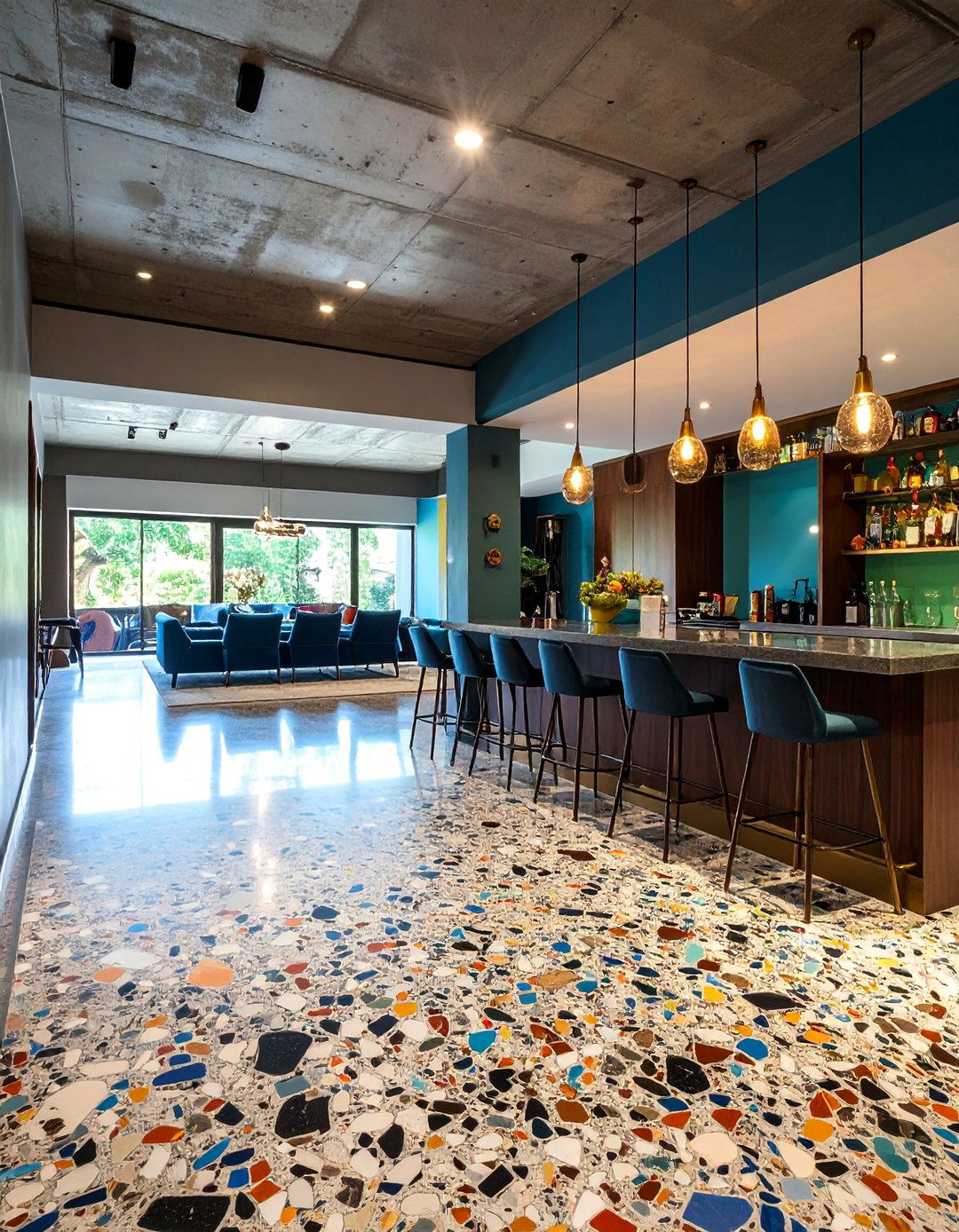
Owing to its mosaic of marble chips locked in cement or epoxy, a terrazzo basement floor reads like functional art that can outlast the house itself. Properly sealed, terrazzo is almost impermeable to stains and water, so basement humidity poses little threat. Contractors pour the mix on site, then grind, polish, and seal, creating a seamless slab easy to mop. You can embed brass divider strips to outline zones—ideal for separating a bar area from a playroom without walls. Although initial cost is high, refinishing decades later restores the original sheen for a fraction of new installation, saving future budgets.
15. Reclaimed Wood Basement Floor: Rustic Character
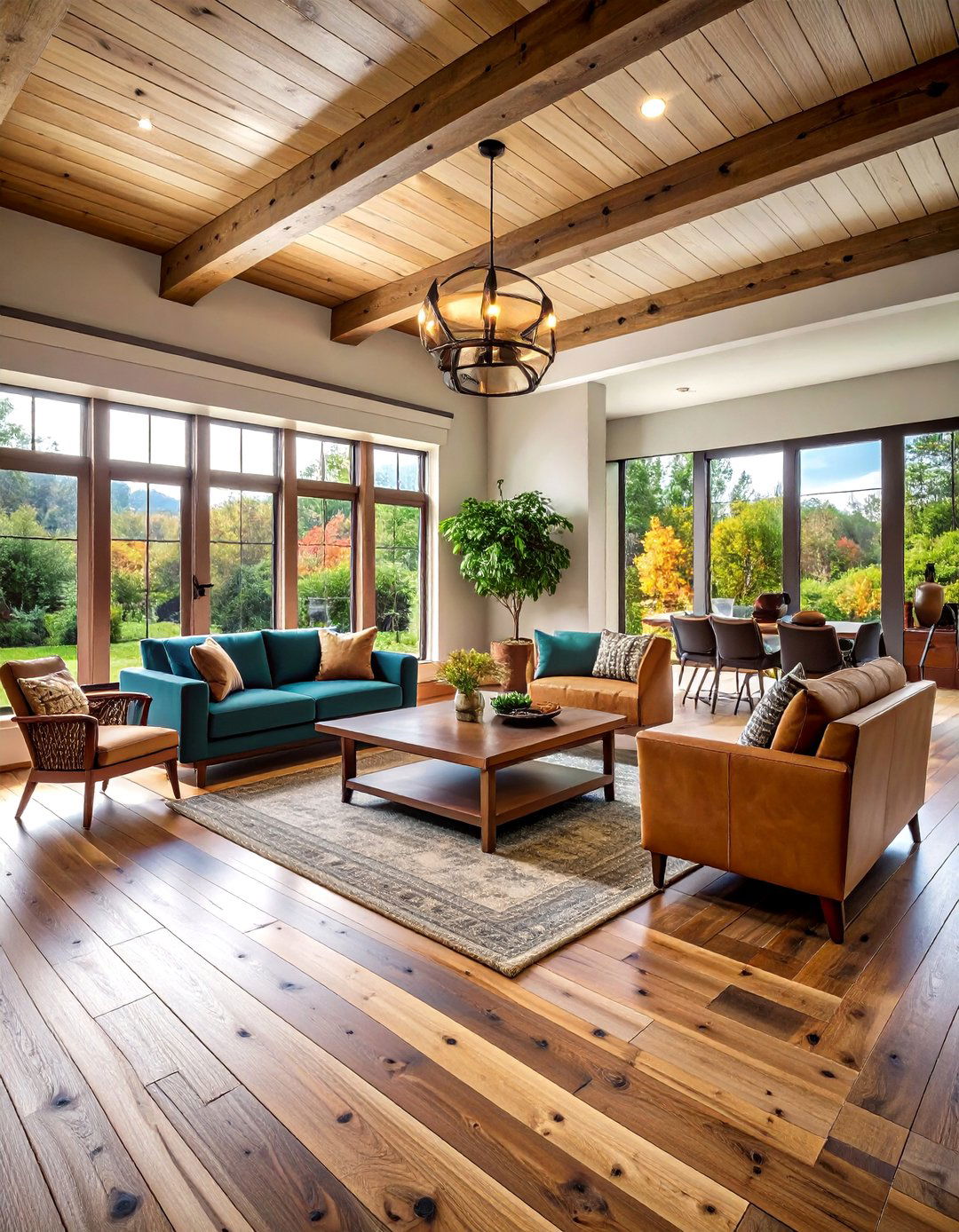
Despite the challenges of moisture, a reclaimed-wood basement floor can layer in history and warmth when paired with modern safeguards. Boards salvaged from old barns arrive kiln-dried and milled with tongue-and-groove edges, yet their nail holes and saw kerfs remain, telling stories beneath your feet. Lay a fluid-applied vapor barrier over the slab first, then glue the planks down with elastomeric adhesive that tolerates seasonal movement. For extra insurance, choose engineered reclaimed veneers on plywood cores. Finish with hard-wax oil to preserve character rather than plastic-looking polyurethane. Expect to pay more per square foot, but each scratch simply adds to the narrative.
16. Interlocking PVC Basement Floor: Workshop Ready
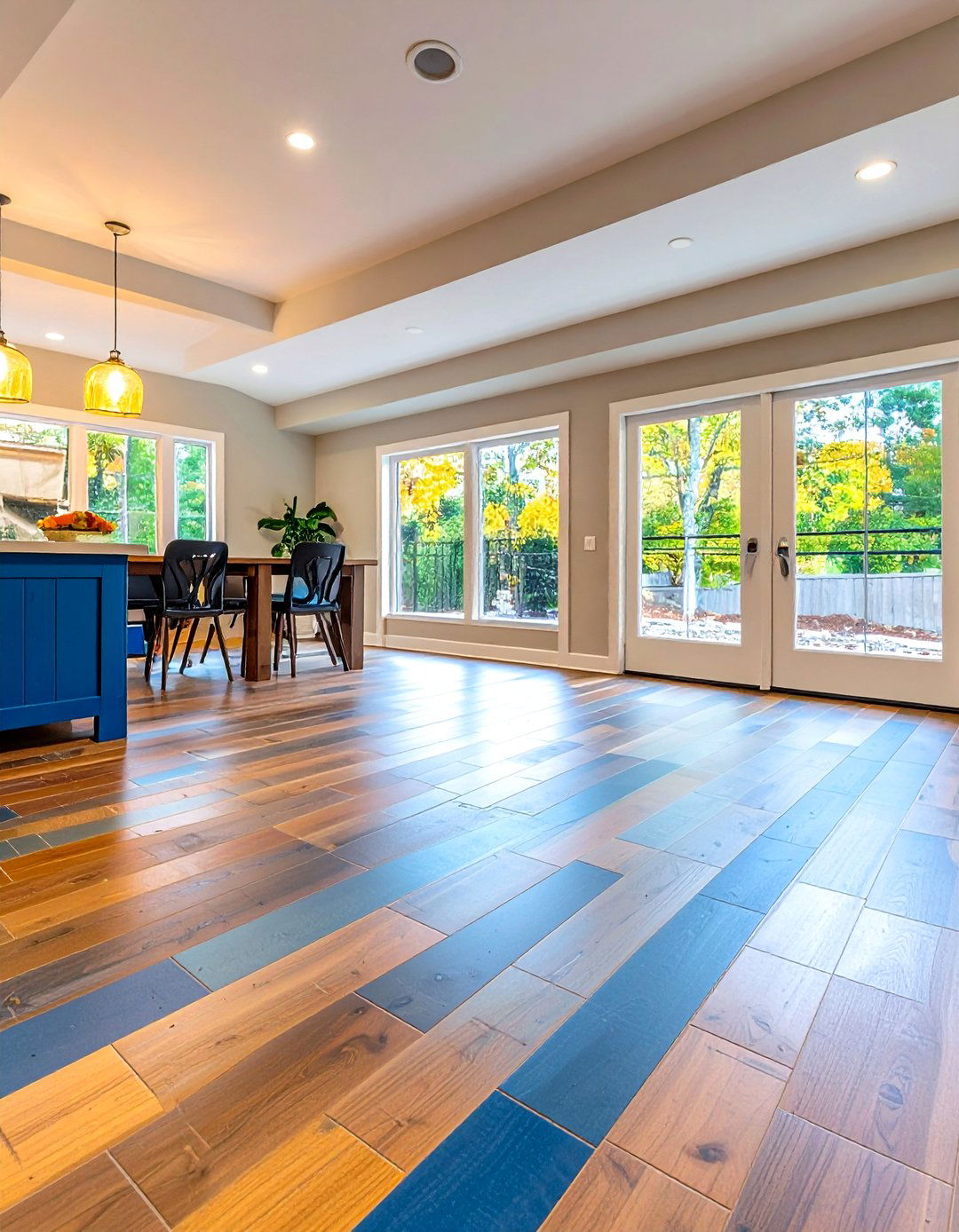
Bringing garage-grade toughness indoors, an interlocking PVC basement floor is perfect for workshops or home gyms that see dropped tools and rolling creepers. The square tiles feature hidden dovetail or T-joints that hammer together with a rubber mallet, floating over minor cracks without fasteners. Flexible PVC absorbs impact yet resists chemicals like brake cleaner, making post-project wipe-downs quick. Because each tile is water-resistant, any leak stays on the surface until you mop it up. Choose raised-coin textures for traction under wet shoes, and finish edges with snap-on ramps so heavy tool chests roll smoothly across the entire slab with ease.
17. Stone Composite SPC Basement Floor: Rigid Waterproof Core
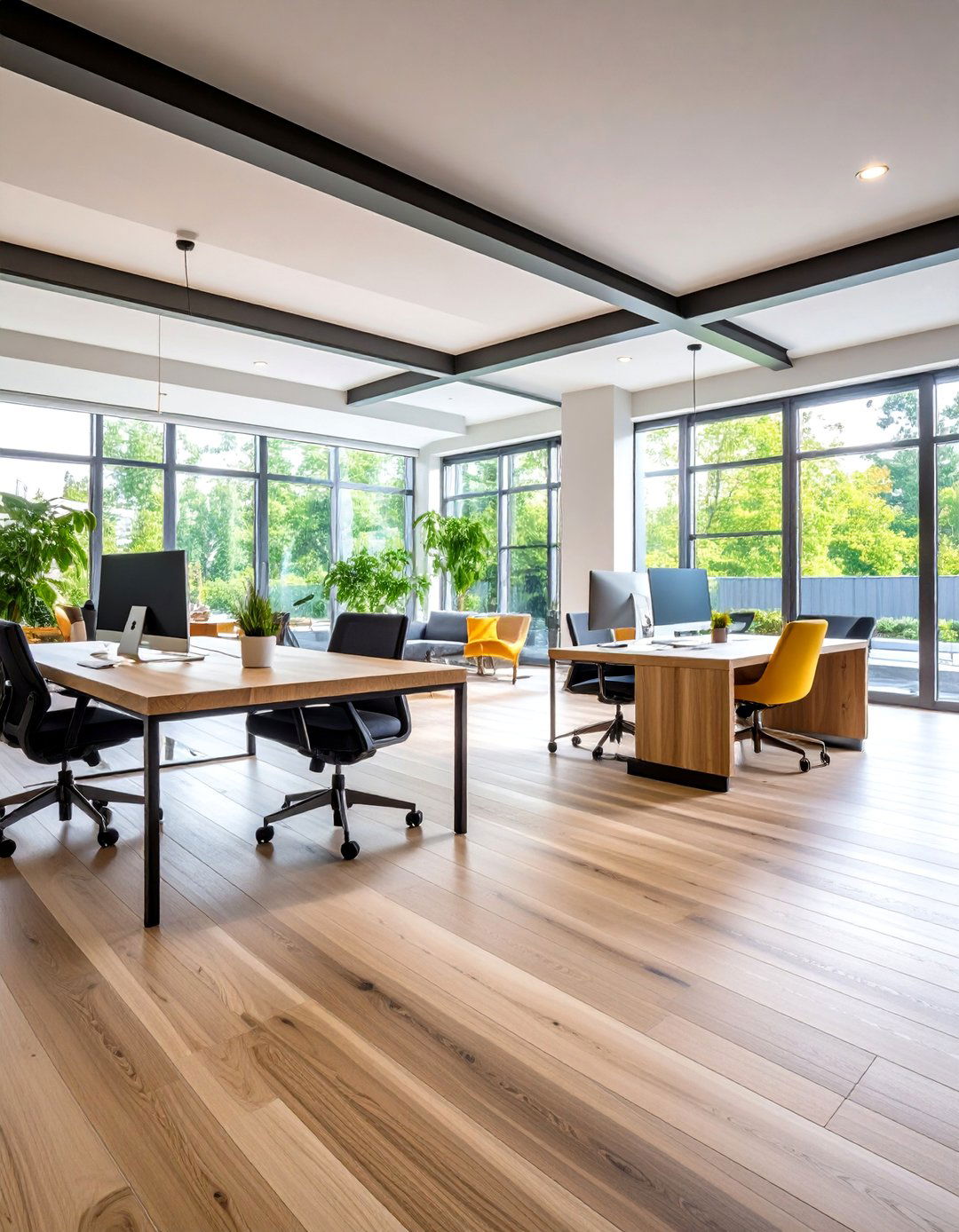
Also called rigid-core vinyl, an SPC stone-composite basement floor merges the best of tile and plank. Limestone dust fused into the vinyl core makes panels ultra-stable, so sunlight from walk-out doors won’t warp them. Built-in IXPE foam underlayment muffles echo, and the click edges include built-in gaskets that block spills from seeping below. With wear layers up to 20 mil, SPC stands up to desk chairs and free weights but still cuts with a simple jigsaw. If you want heated floors later, SPC’s thin profile conducts warmth efficiently; just verify the product’s maximum temperature rating before turning on the thermostat for longevity.
18. Checkerboard Painted Basement Floor: Retro Flair
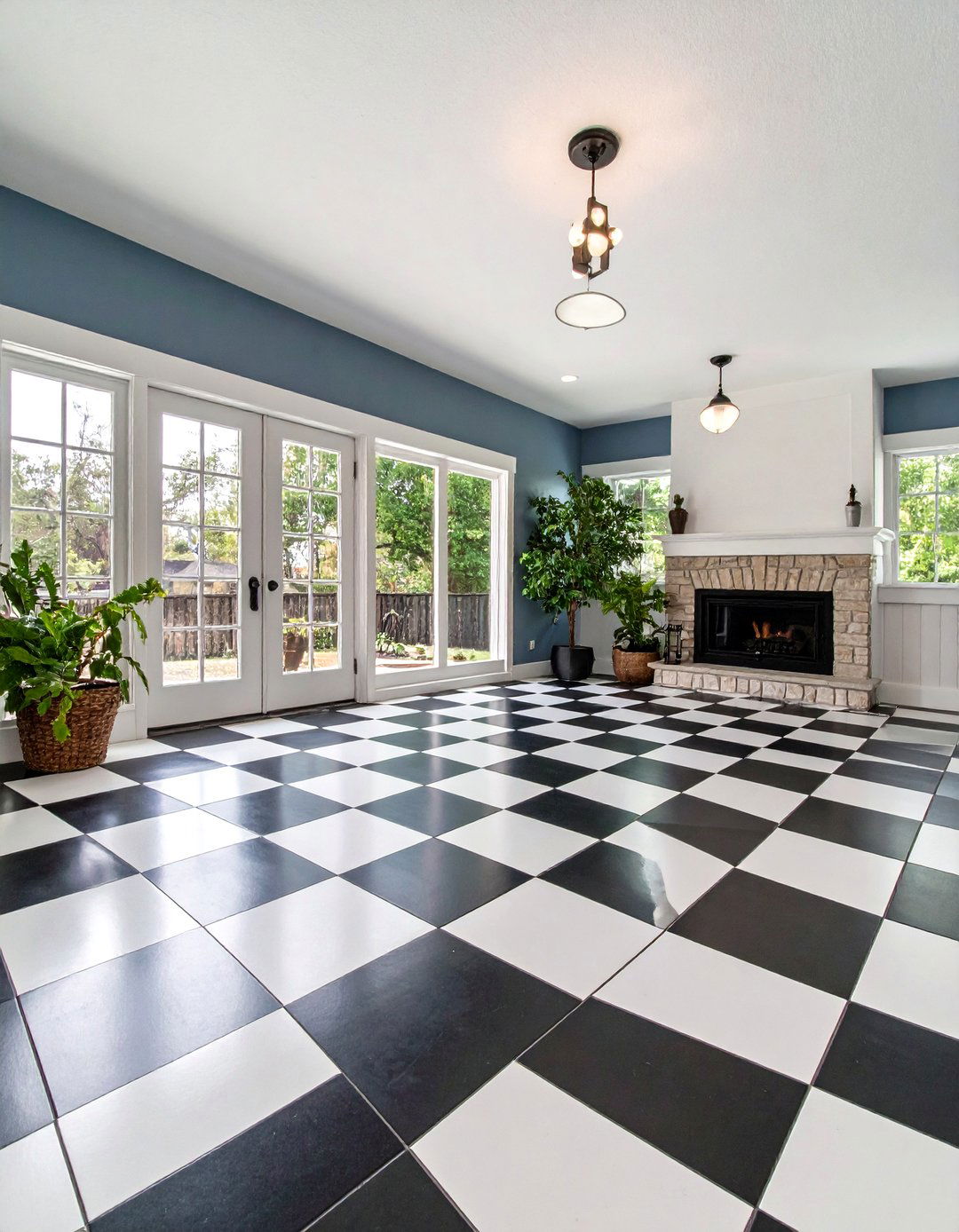
Certainly nothing energizes a windowless rec room like a checkerboard painted basement floor. After priming the concrete, roll one base color, snap chalk lines, and mask alternating squares with low-tack tape or a laser-cut stencil. Use contrasting satin porch paints so the pattern reads clearly but still cleans easily. The high-contrast grid reflects overhead LEDs, brightening corners that used to feel cave-like. To avoid peeling, finish with two coats of water-based polyurethane and wait a full week before parking furniture. If you tire of the look years later, scuff-sand and repaint right over it—no demolition required or messy tile removal.
19. Concrete Microtopping Basement Floor: Seamless Finish
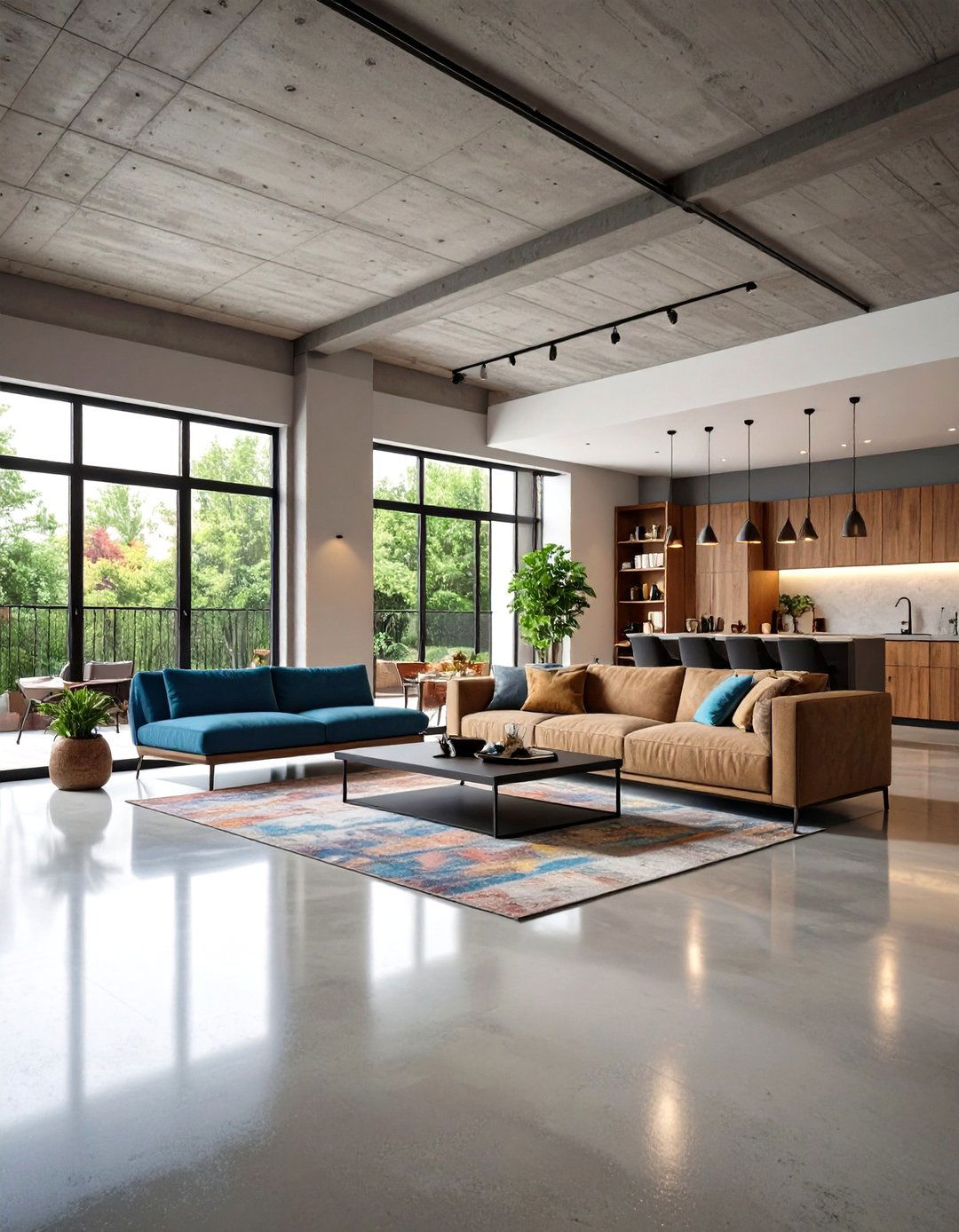
Thus, when structural cracks or mismatched patches ruin aesthetics, a concrete microtopping basement floor gives you a fresh, seamless canvas only credit-card thin. The polymer-modified cement skim coats the slab at about 1–3 mm, bonding tightly even to old adhesive residues. Once cured, it can be burnished to satin, acid-stained for variegated color, or sealed with matte polyurethane for a minimalist loft vibe. Because microtoppings flex slightly, hairline cracks stay hidden longer than with rigid tiles. Keep the area dust-free during application; airborne lint will telegraph through the translucent finish. Regular sweeping and an occasional pH-neutral mop keep the surface gallery-ready.
20. Artificial Turf Basement Floor: Indoor Sport Zone
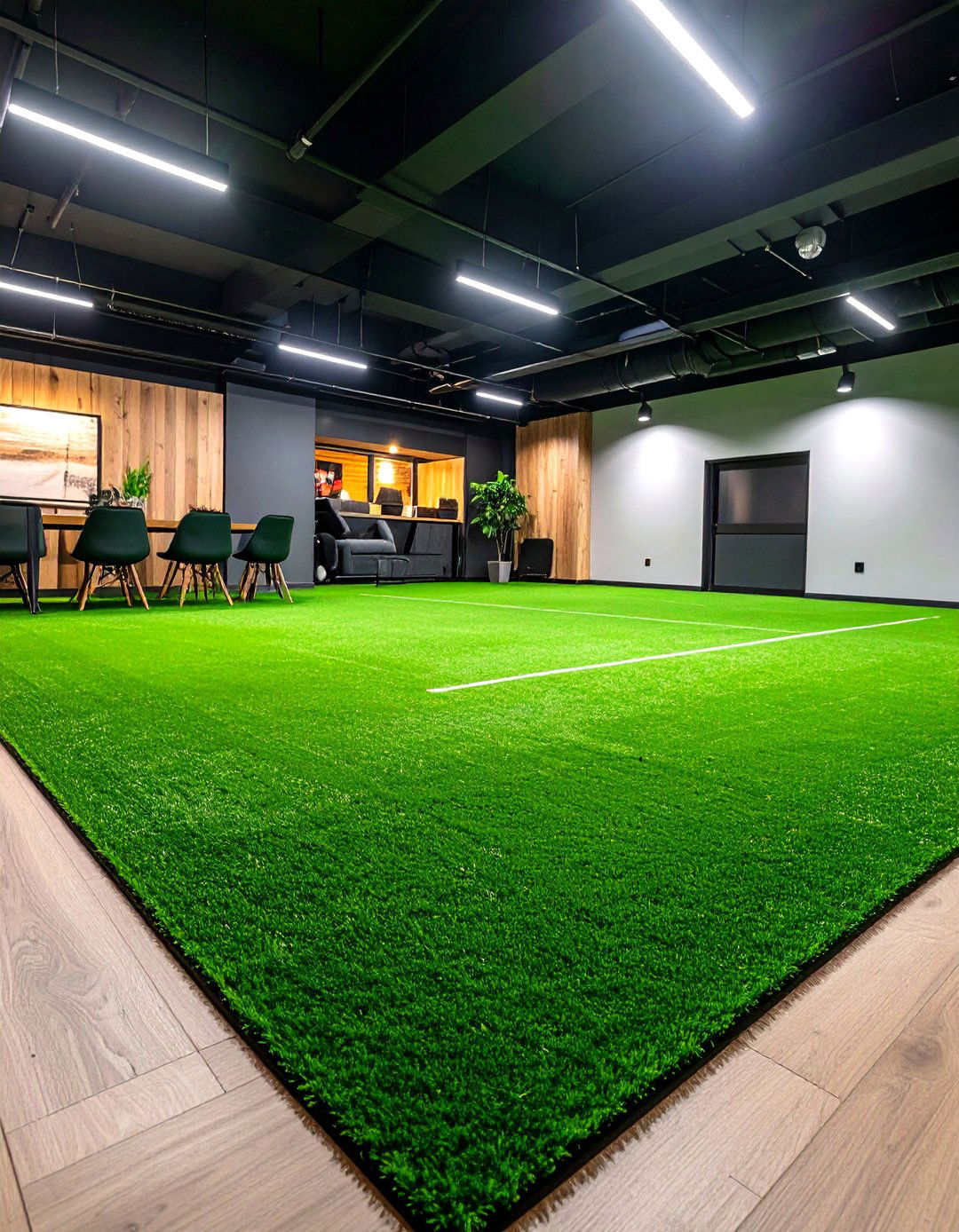
Finally, an artificial-turf basement floor converts unused square footage into an all-weather sports zone or playful playroom. Synthetic grass rolls with built-in foam padding cushion falls, absorb sound, and invite everything from yoga mats to mini-soccer drills. Installation is cleat-free: double-sided tape along perimeter walls usually suffices, though high-impact gyms may glue seams for extra security. The bright green pile bounces light and masks utility pipes, making the room feel less subterranean. Vacuuming keeps fibers fluffy, and occasional enzyme cleaner tames sweaty-sneaker odors. If you ever revert the space, most turf lifts without residue and can be reused outdoors for a putting green.
Conclusion:
Choosing among basement floor ideas ultimately comes down to aligning performance with personality. Think first about moisture risks and how quickly you need the space back in service; then weigh comfort, acoustics, and maintenance. Hard surfaces like polished concrete or porcelain laugh at floods, while cushioned picks such as cork, rubber, or turf pamper joints. Modular options let you swap damaged sections; seamless finishes keep allergens down. Whatever route you take, a sound vapor barrier and vigilant humidity control will protect the investment—and free you to enjoy that new guest suite, gym, or studio with confidence for years.



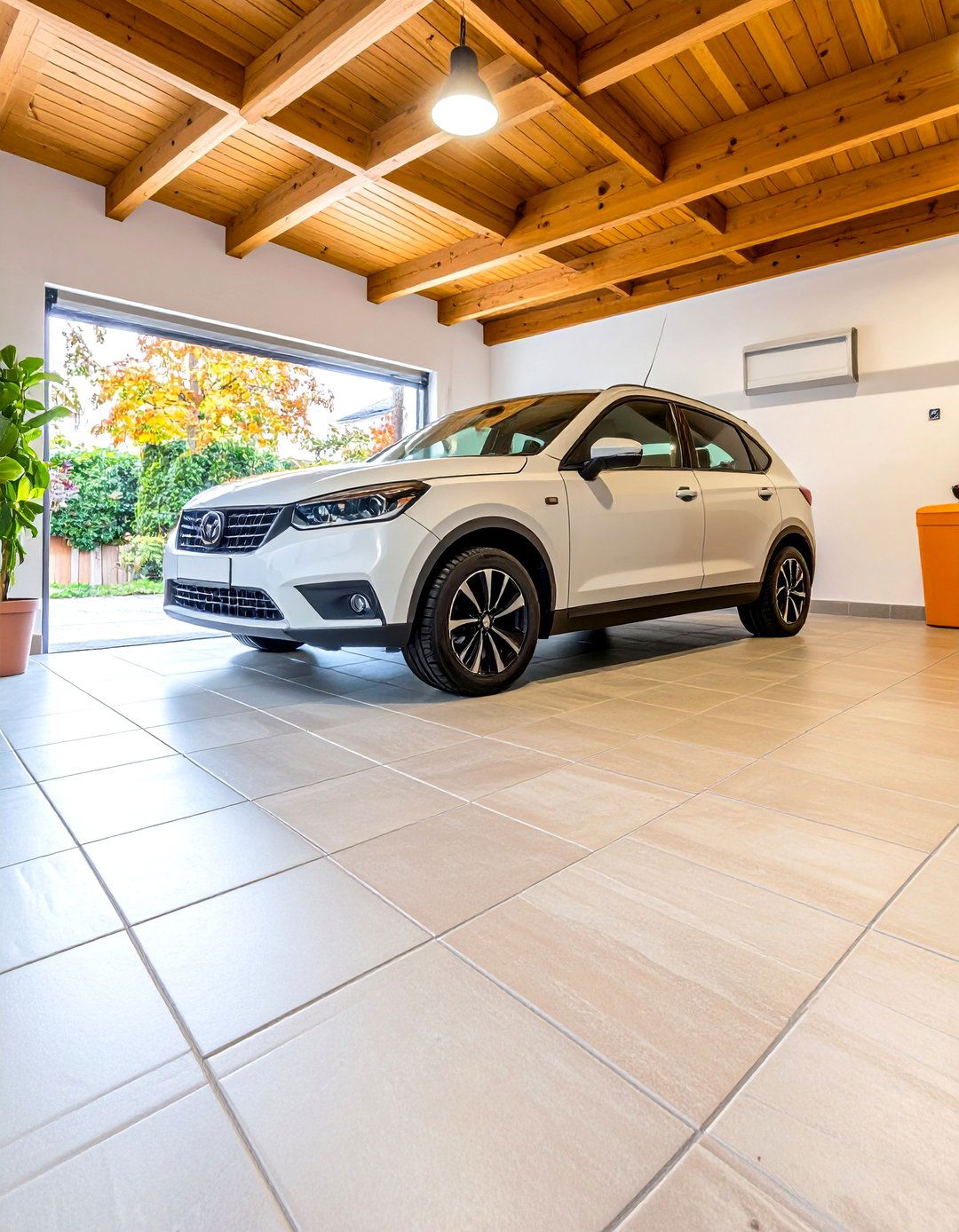
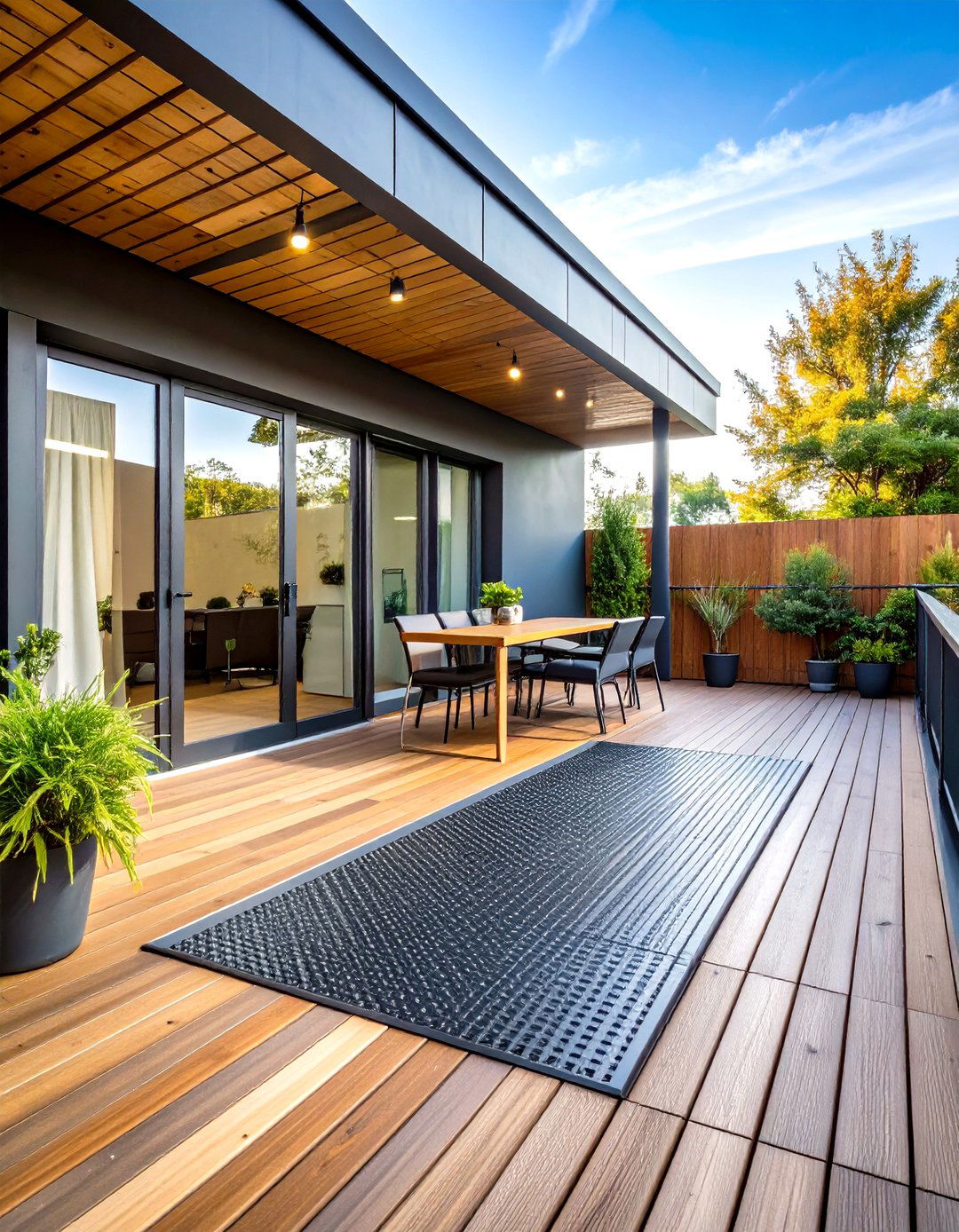
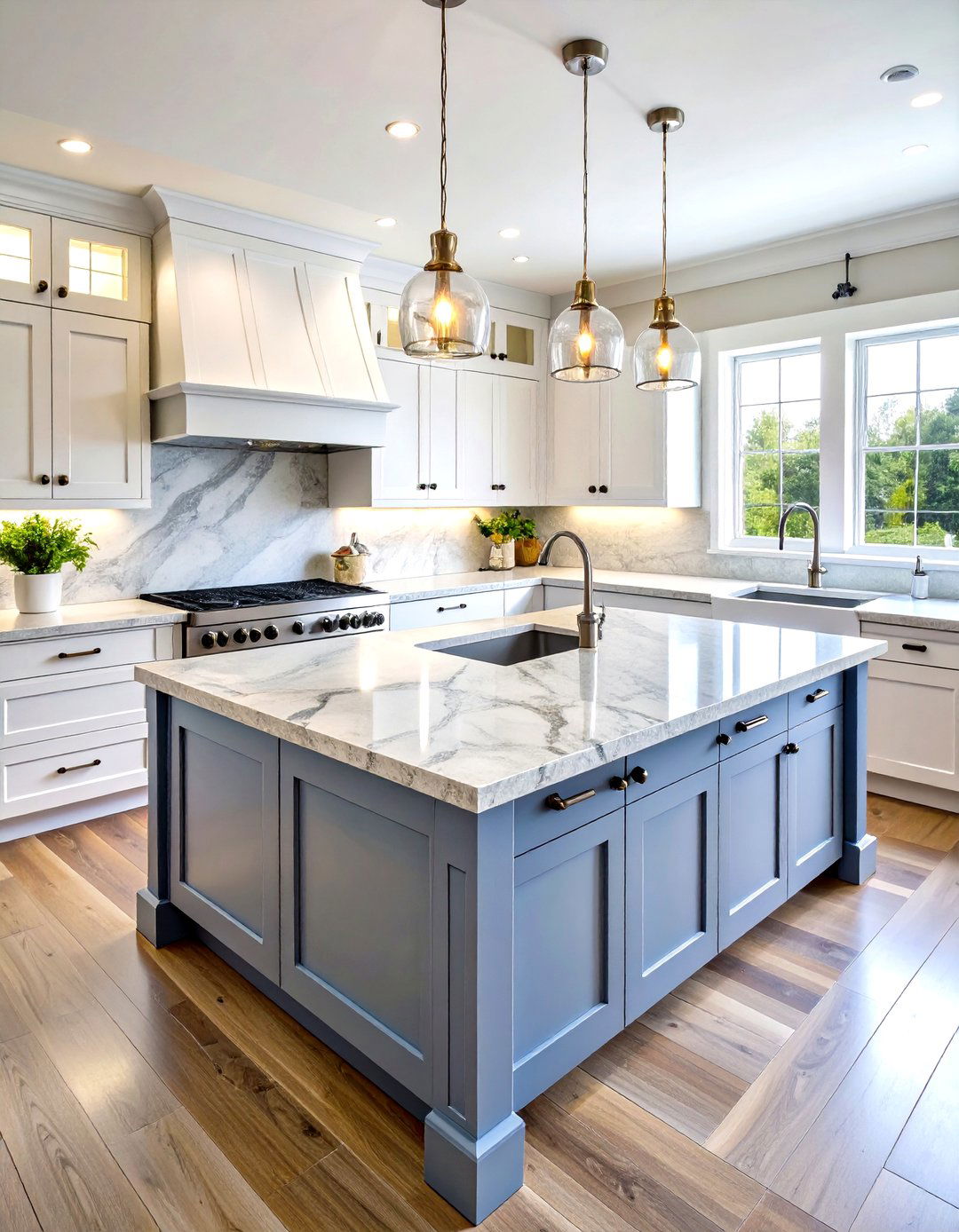
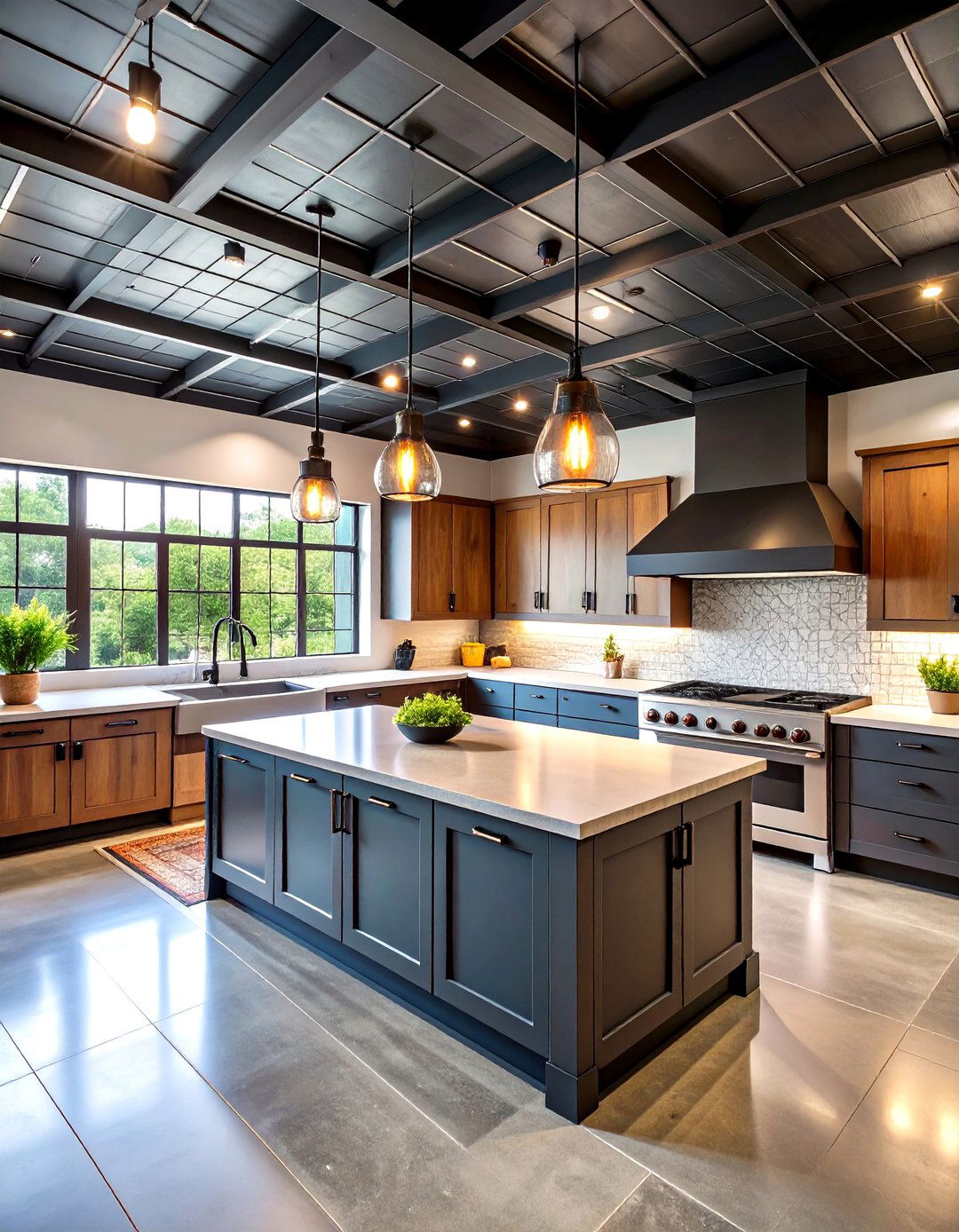

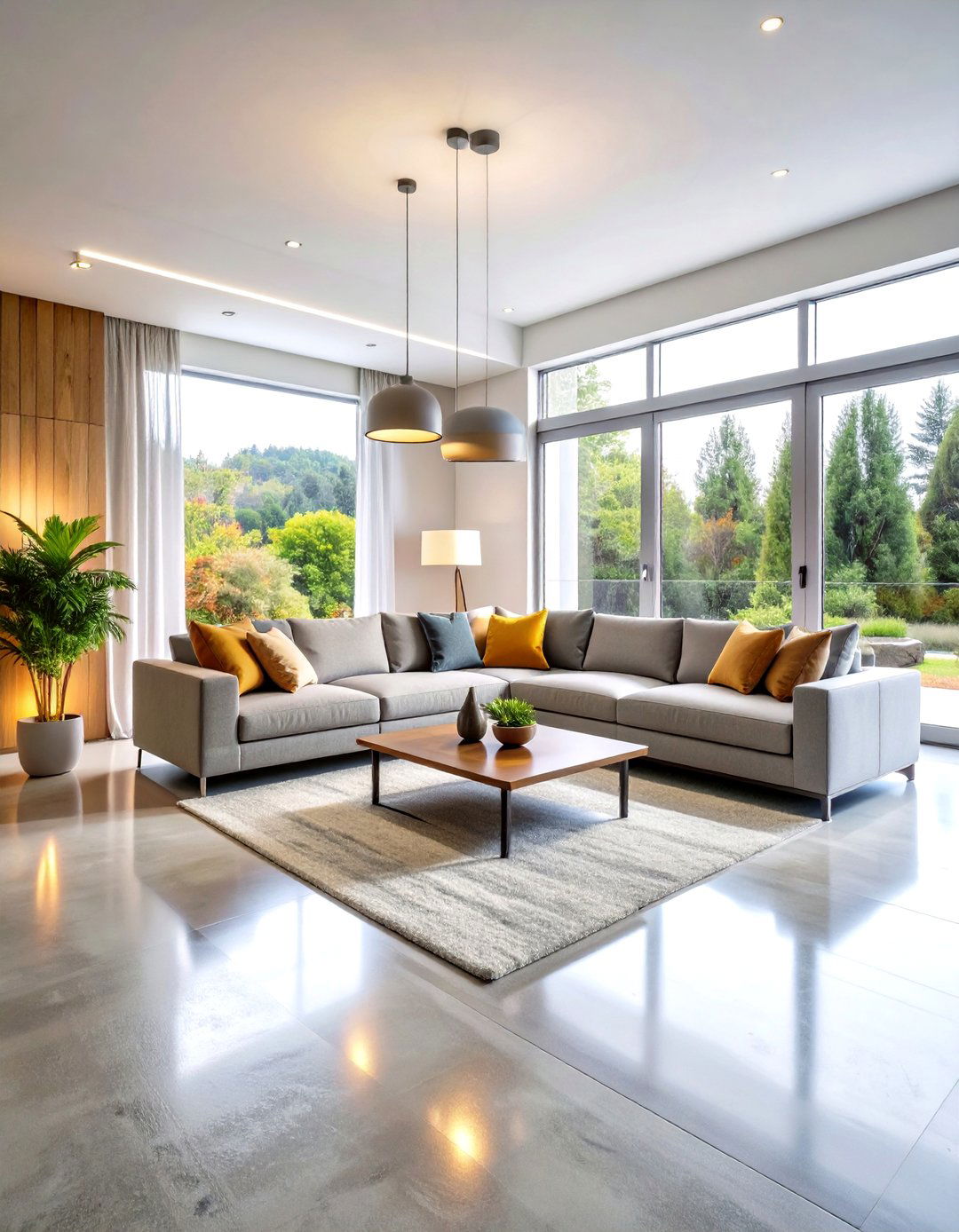
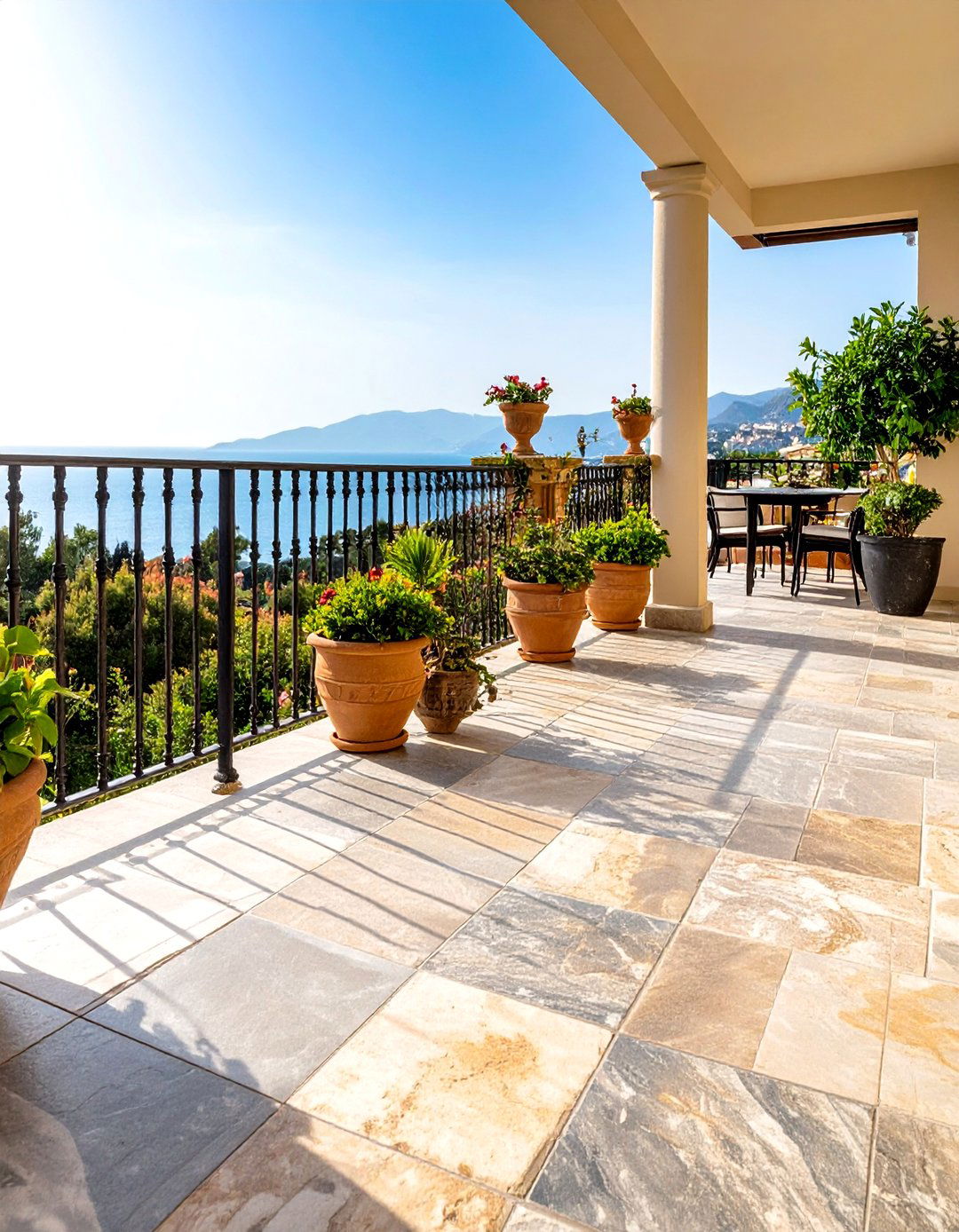
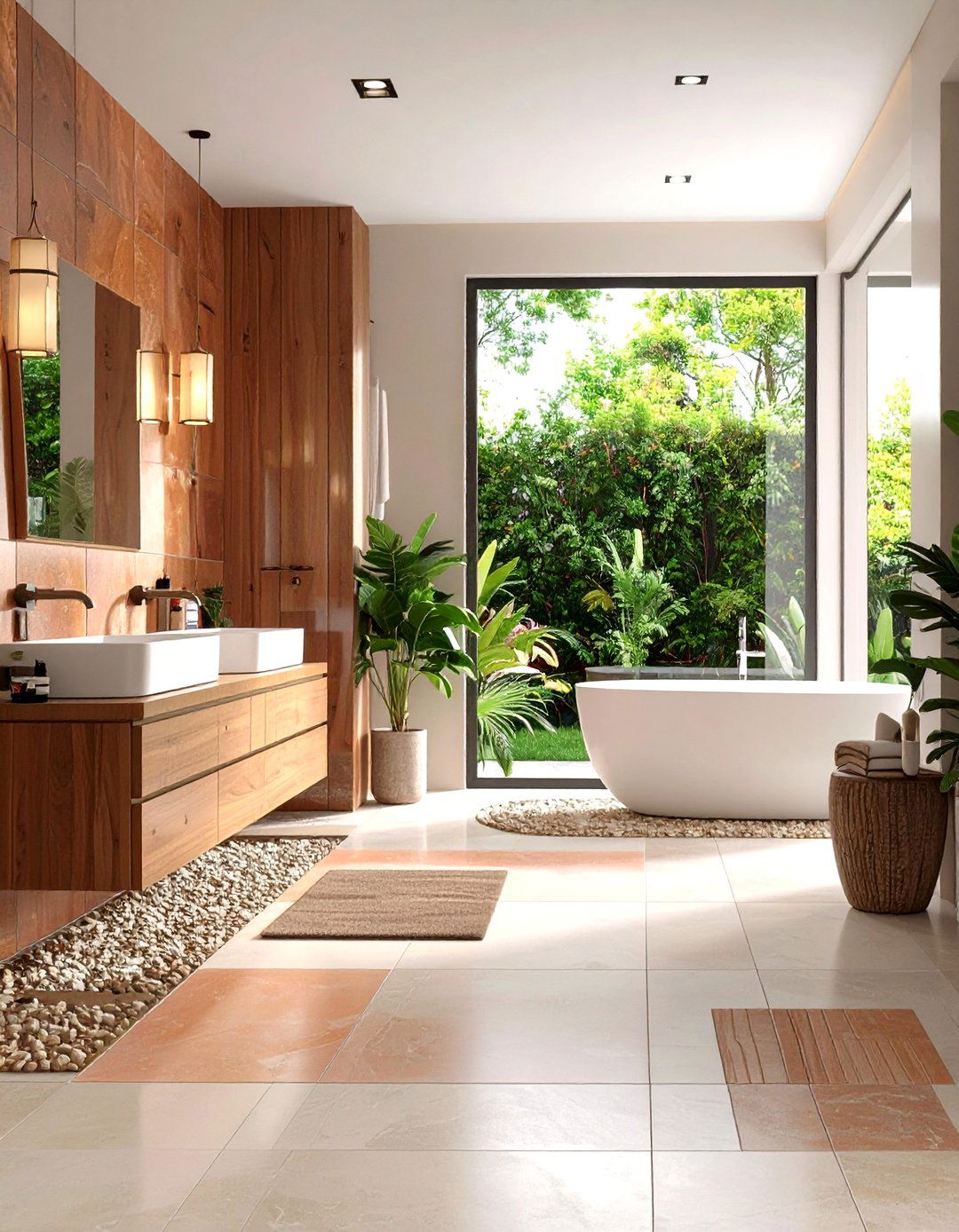
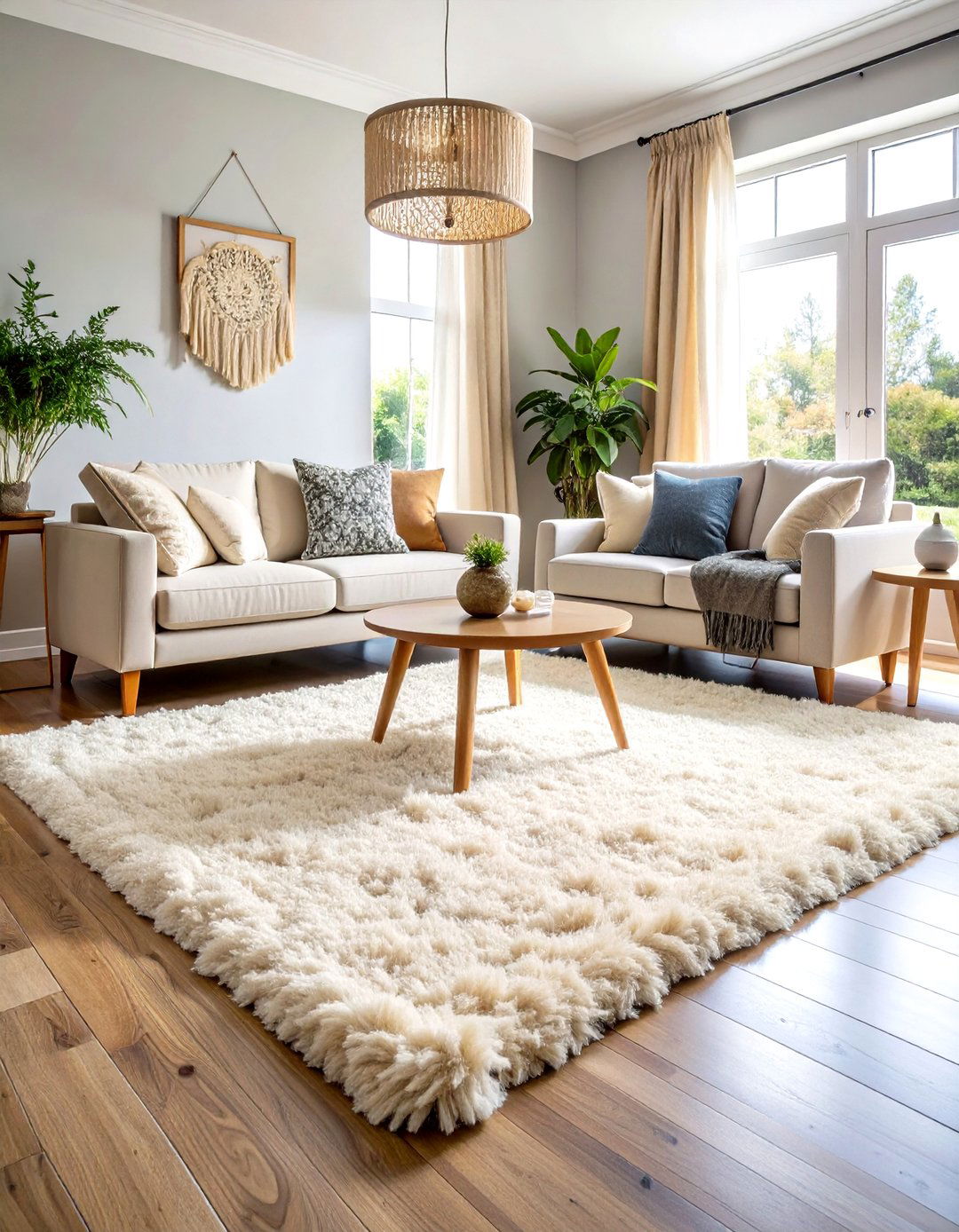
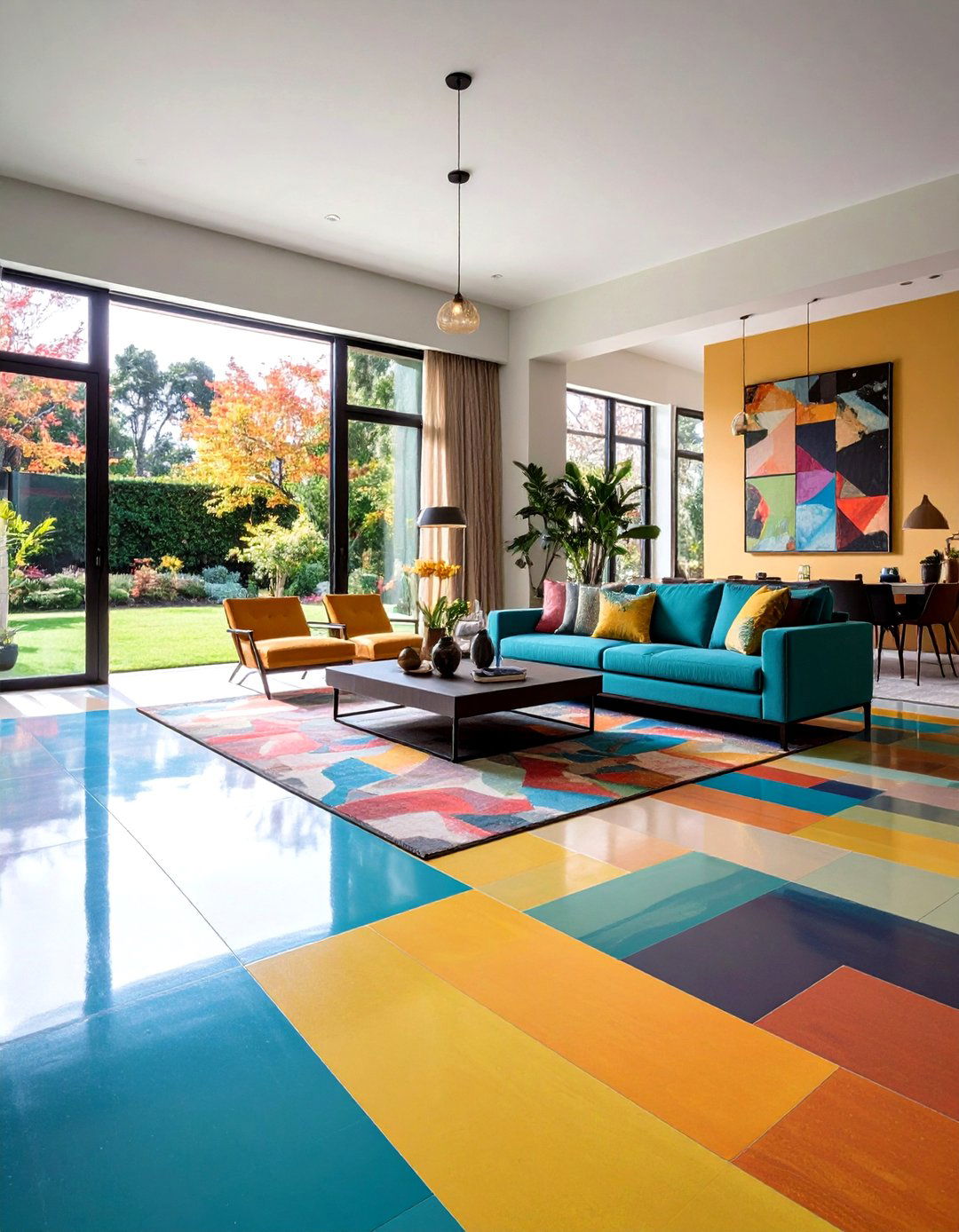
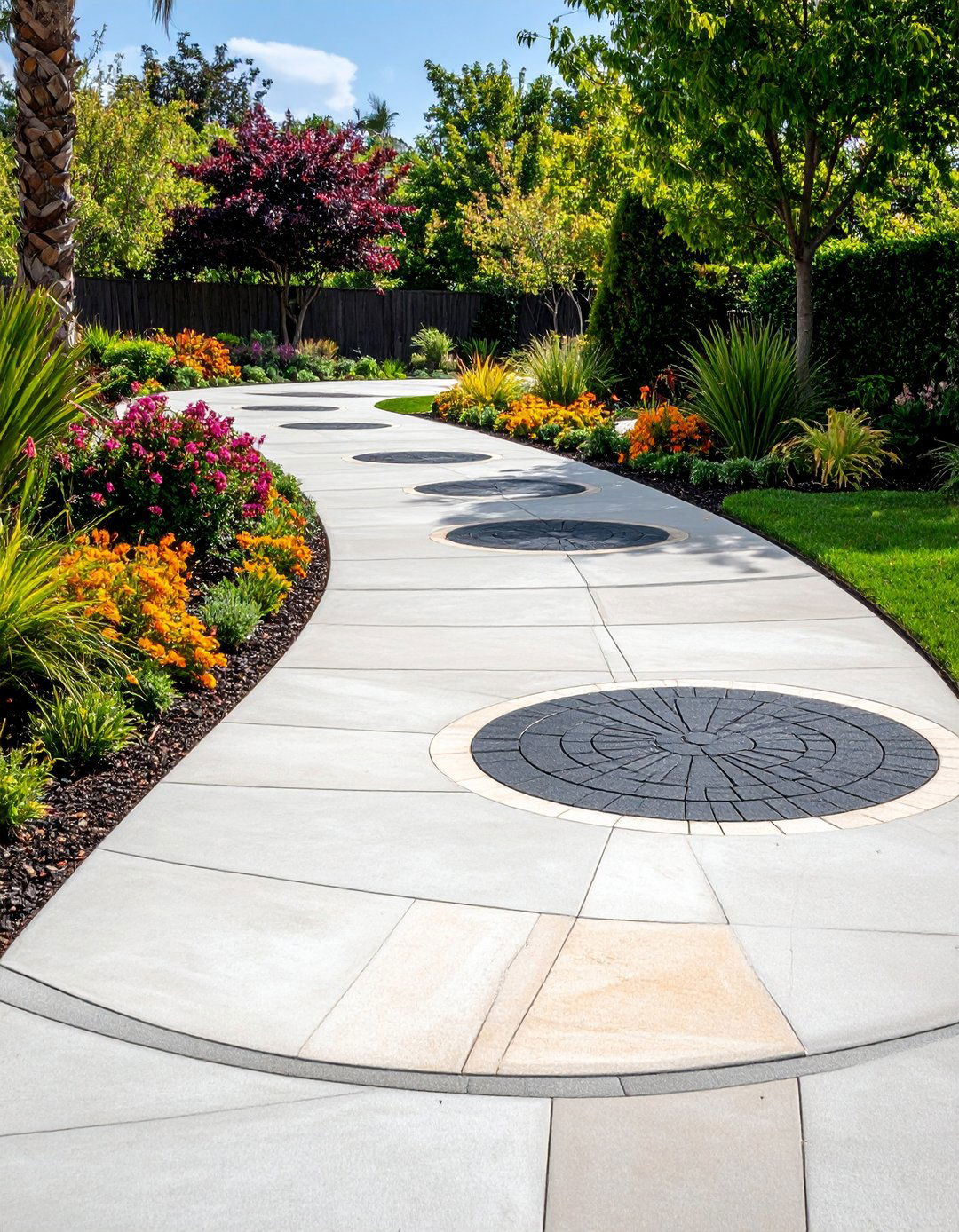
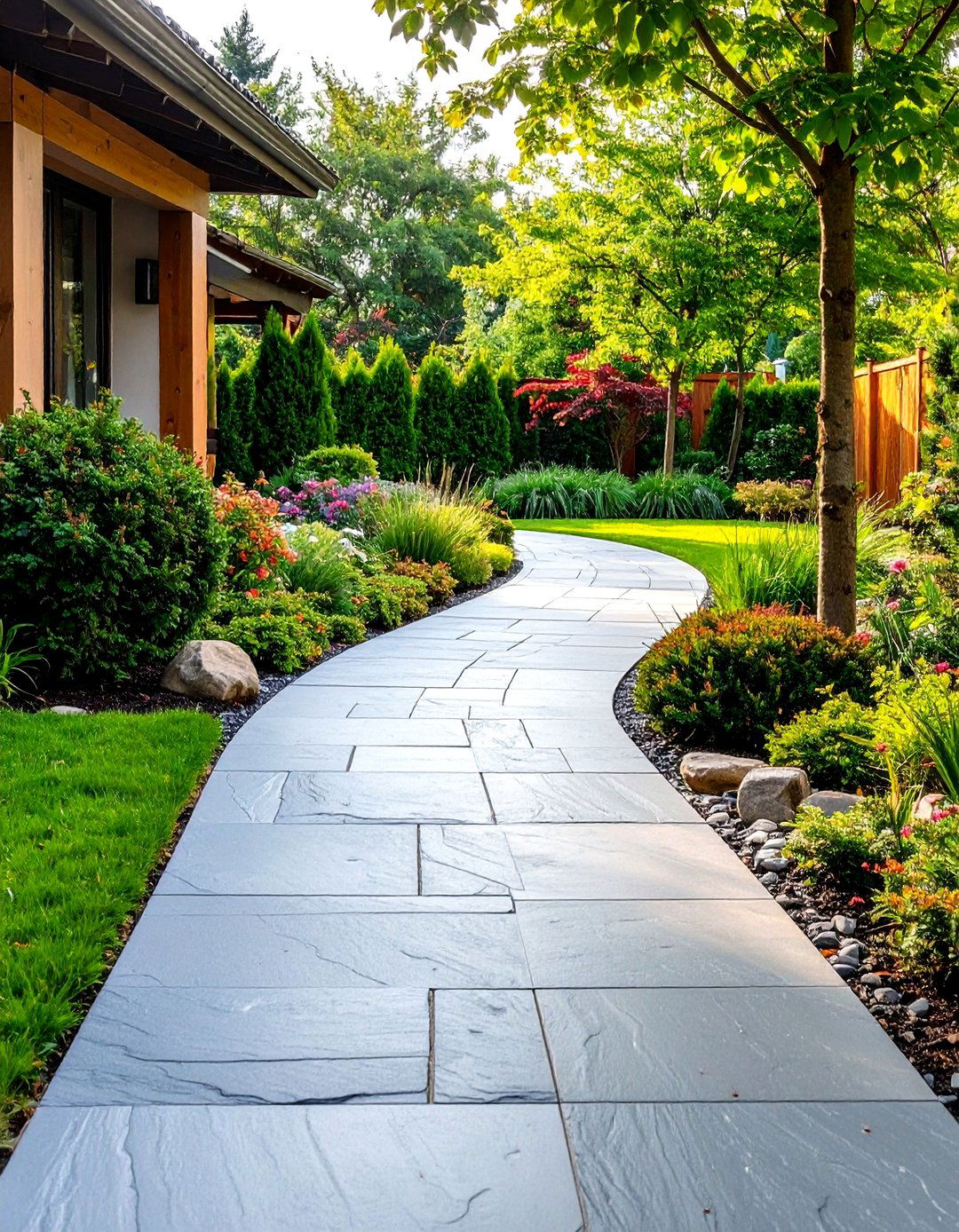
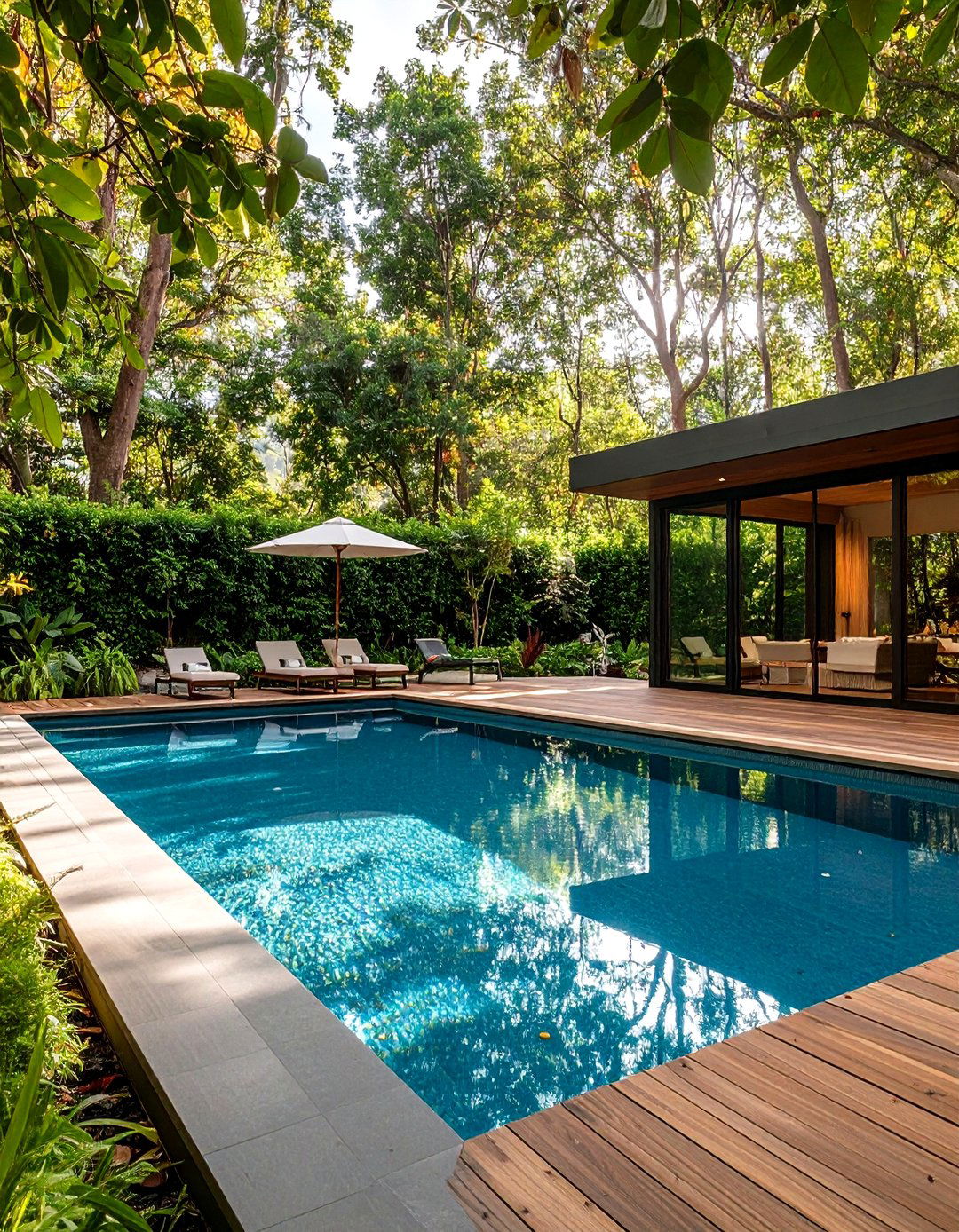
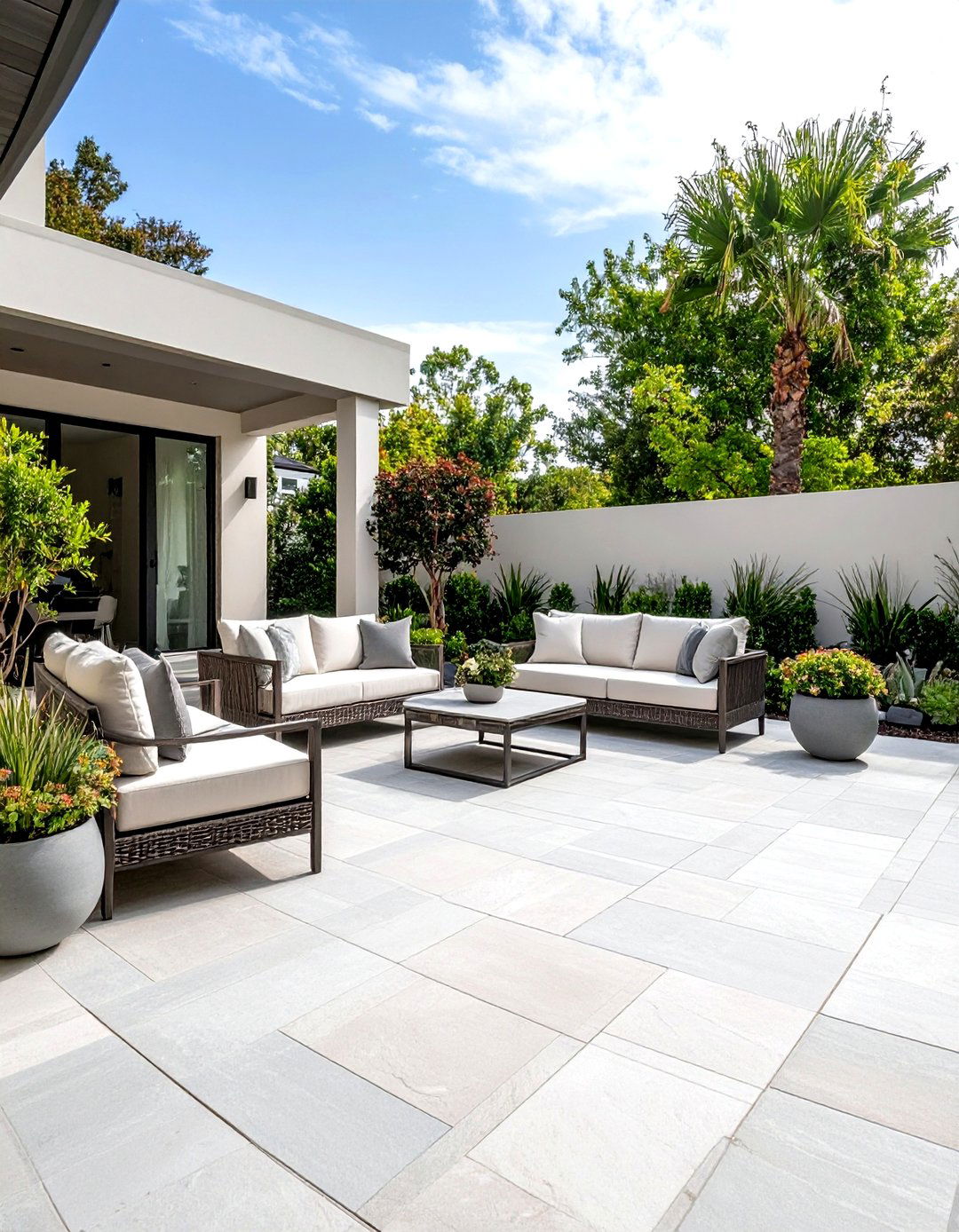
Leave a Reply